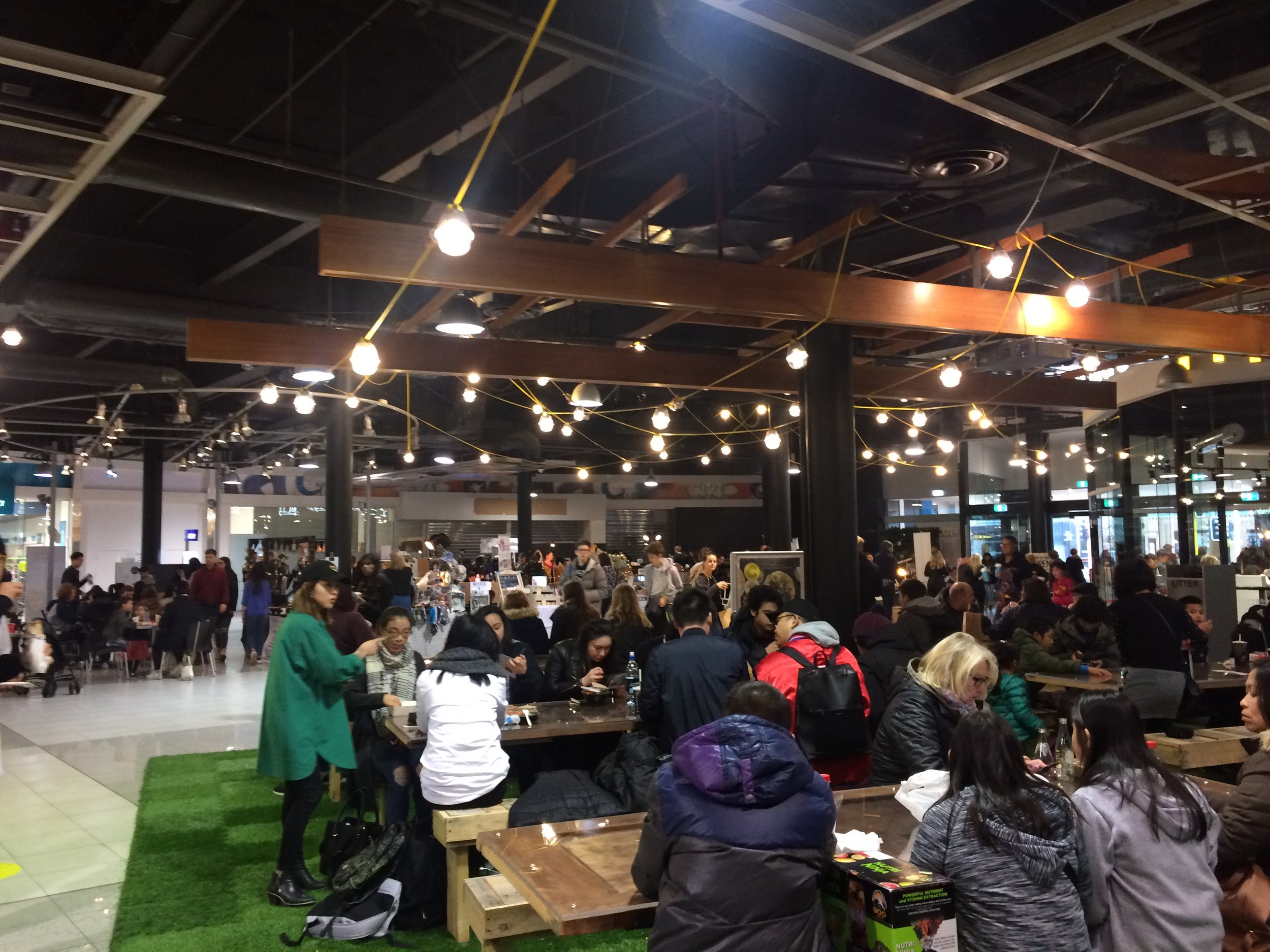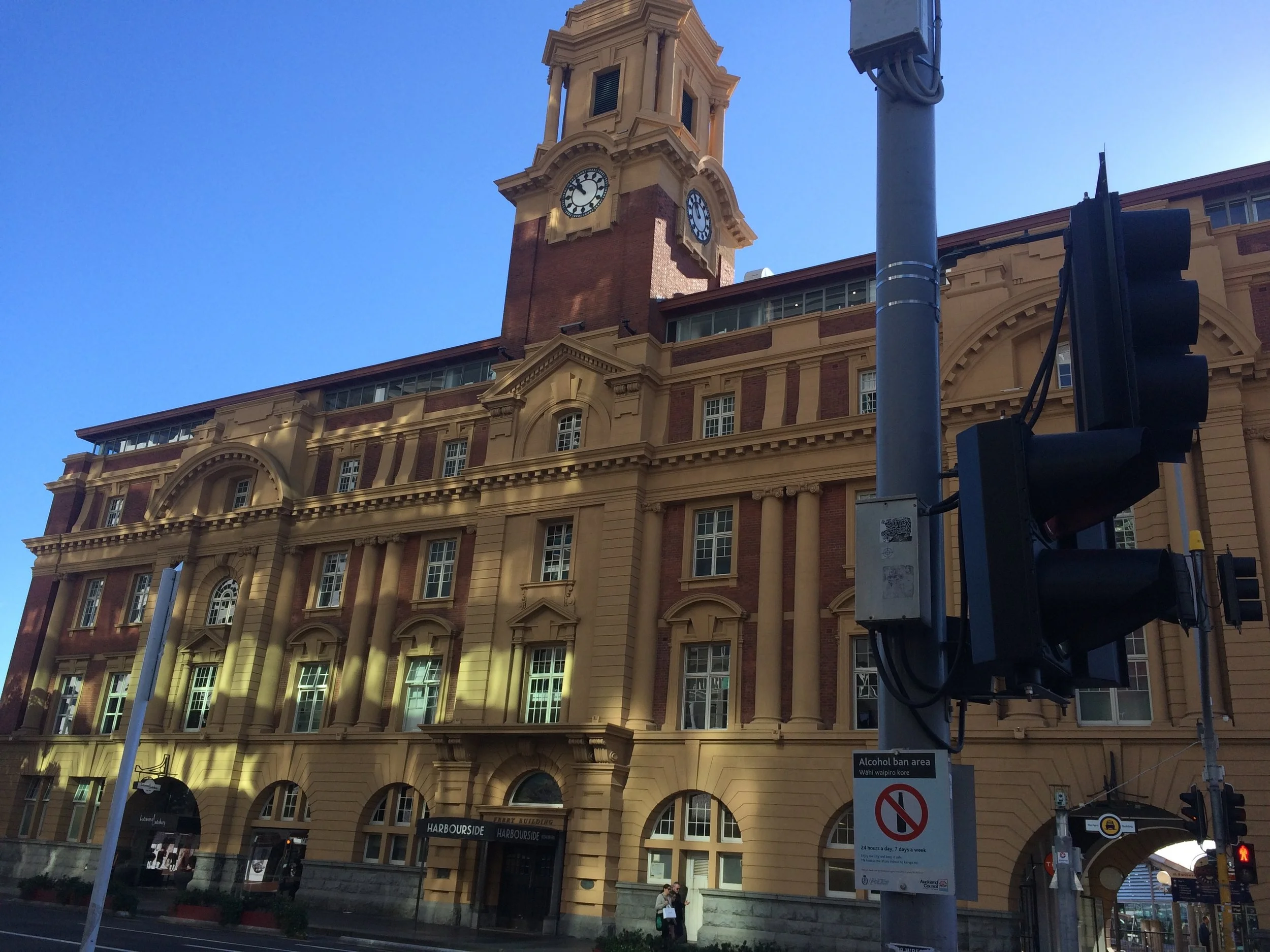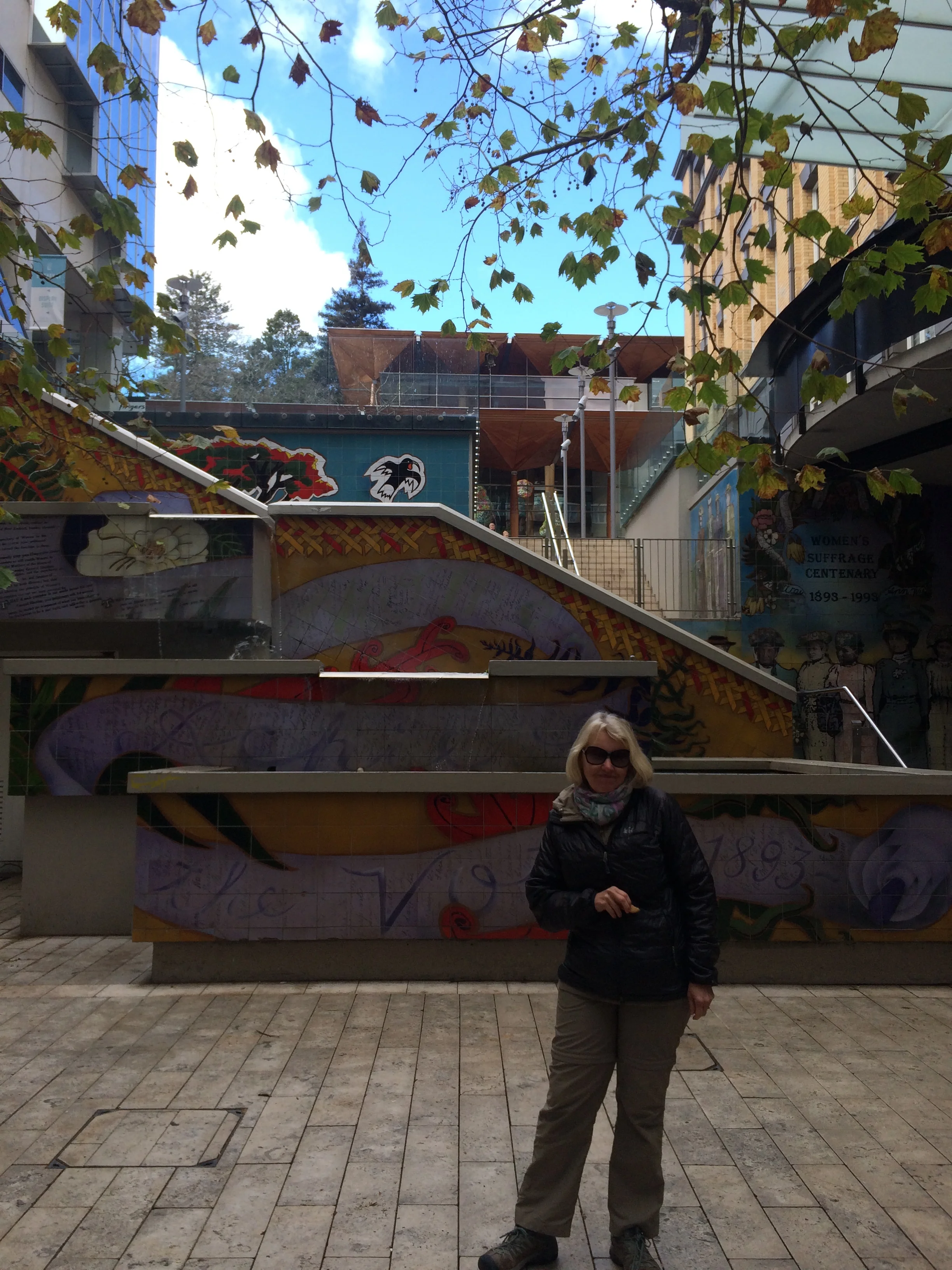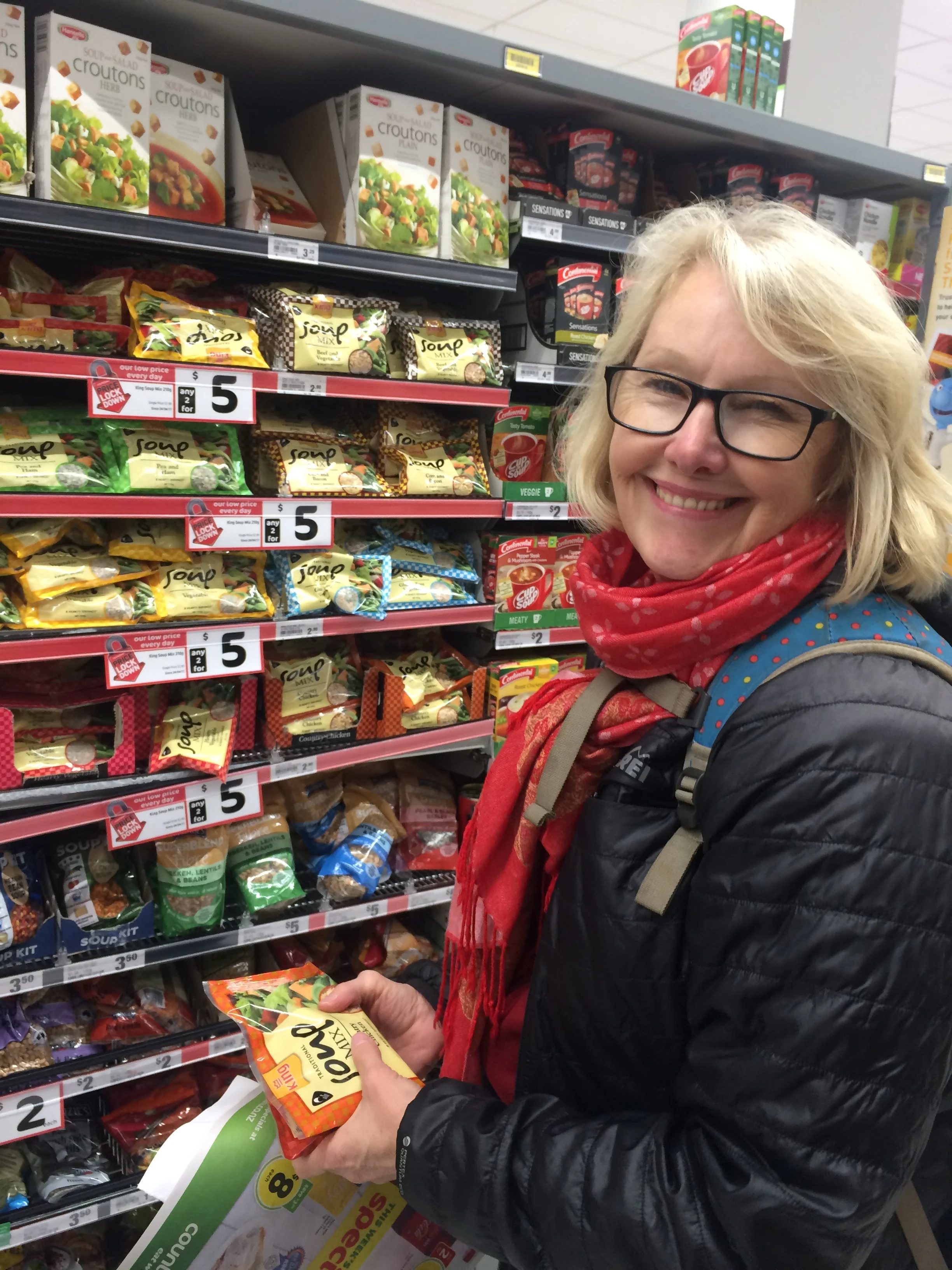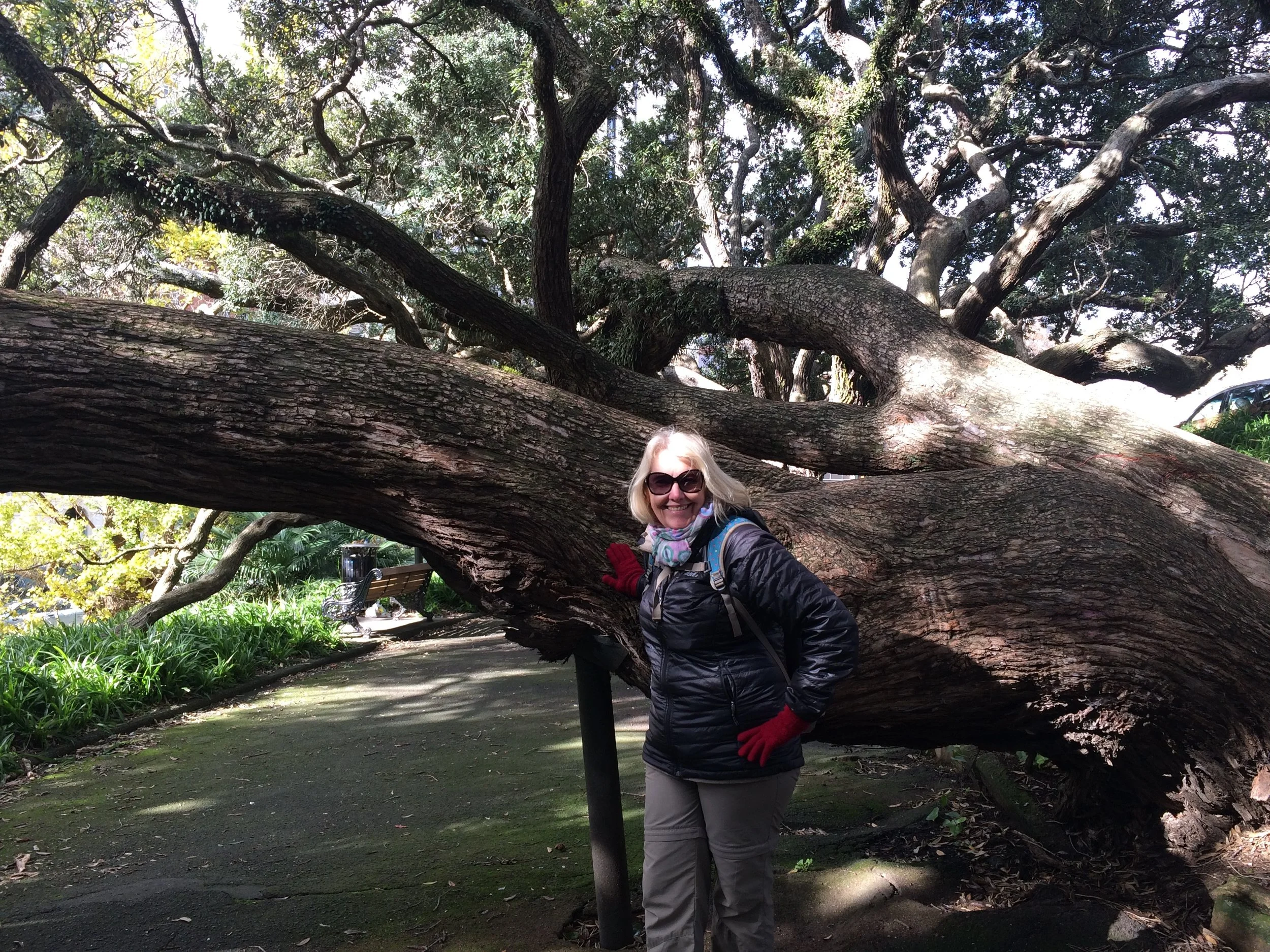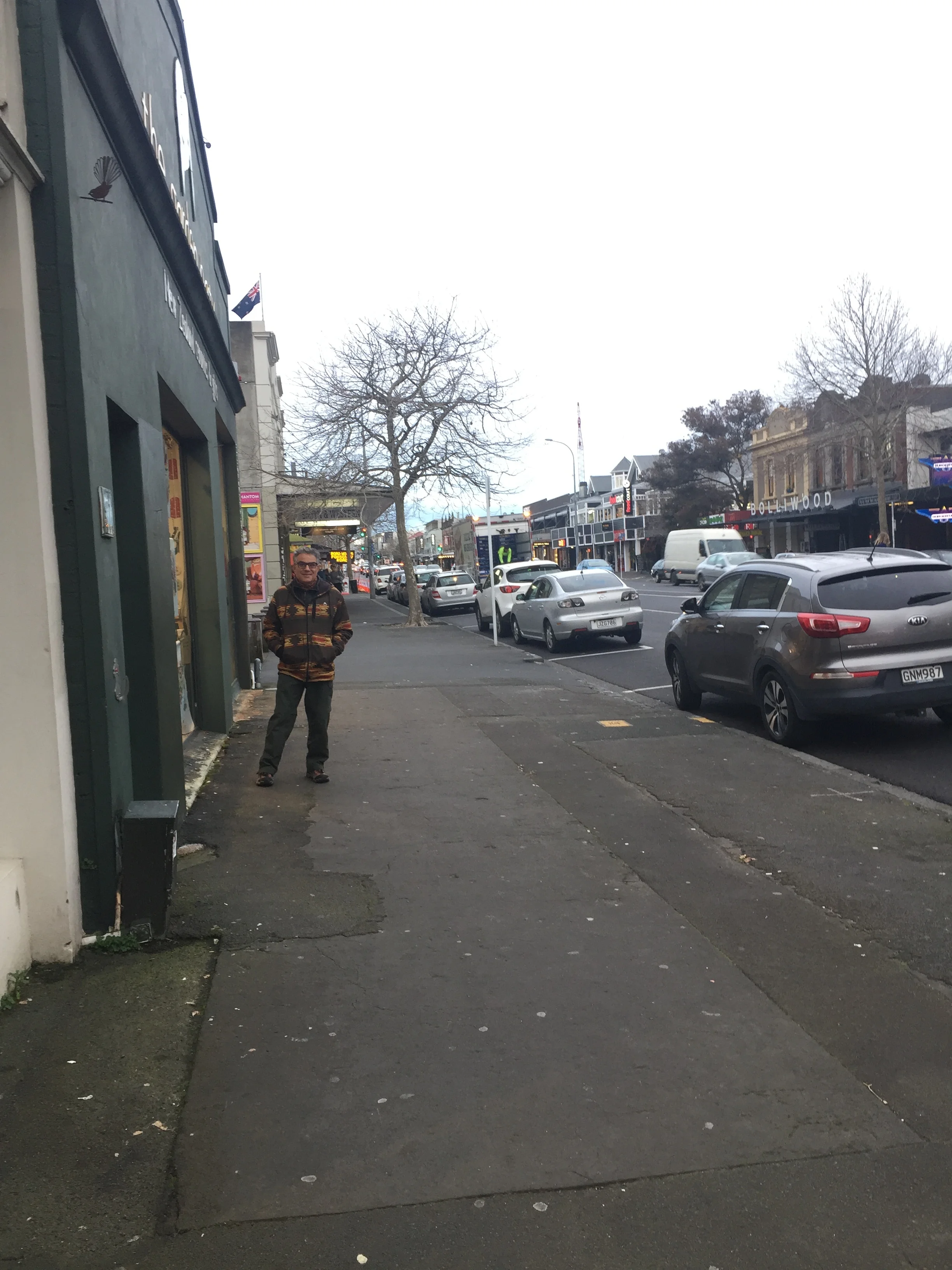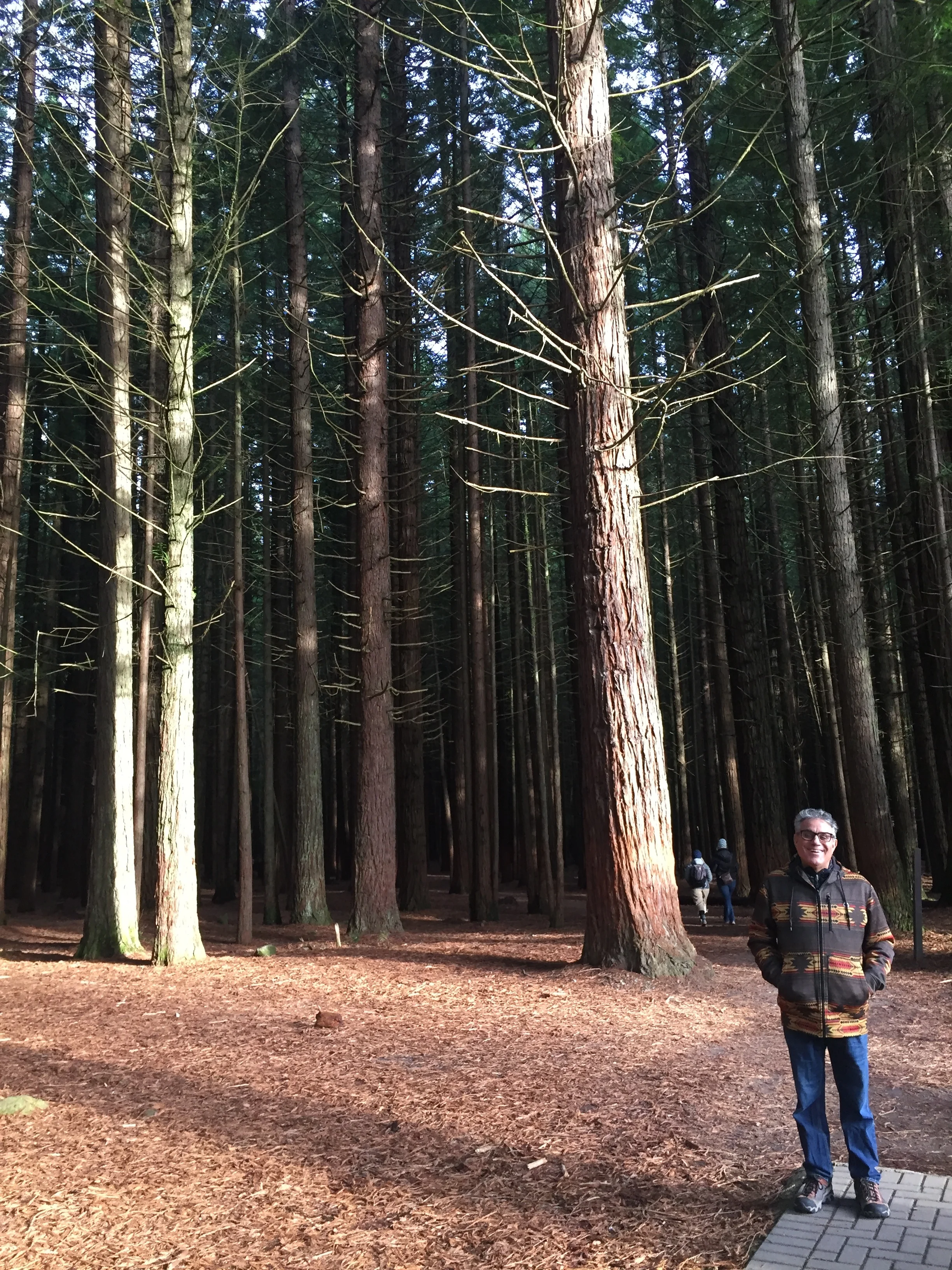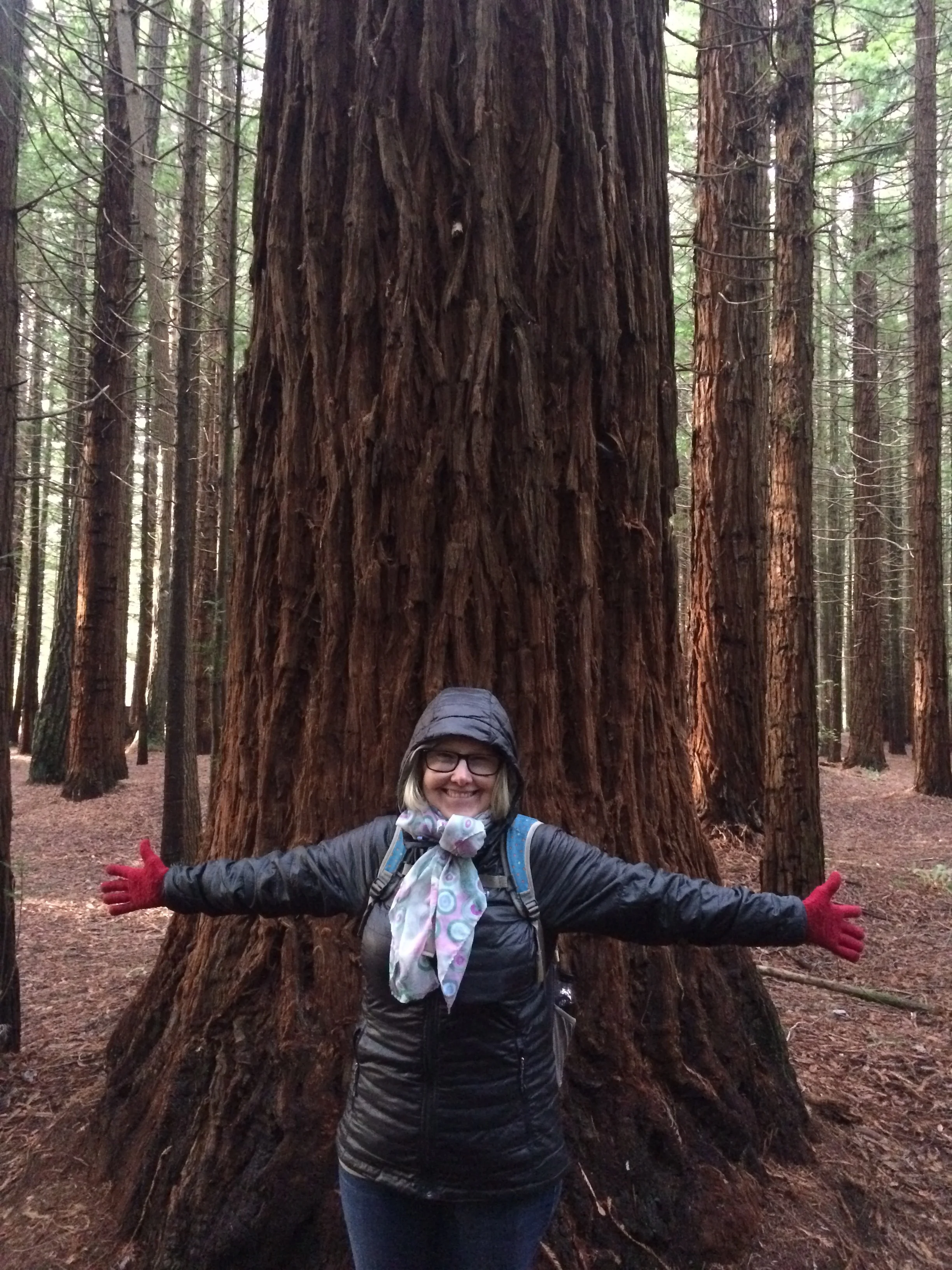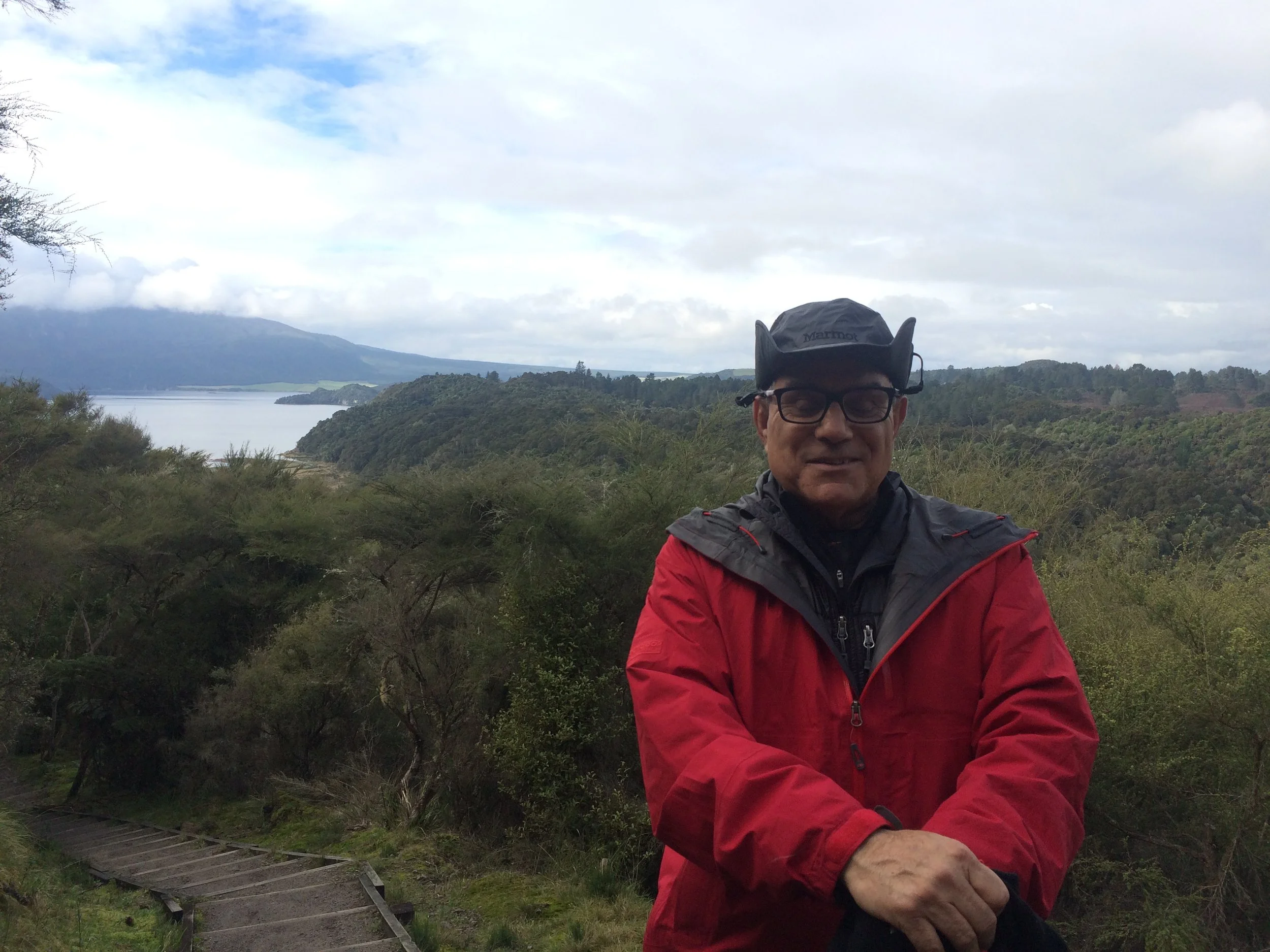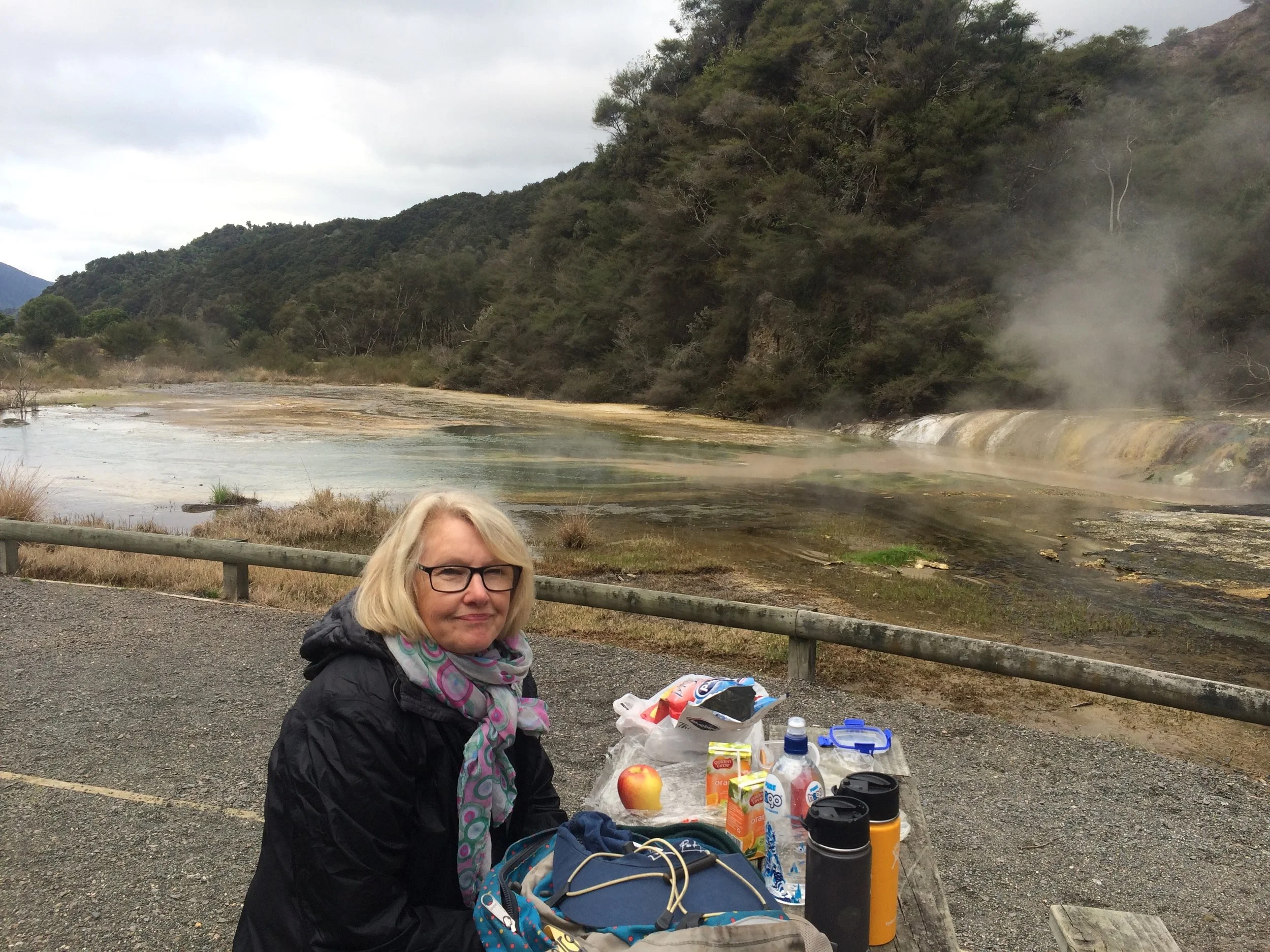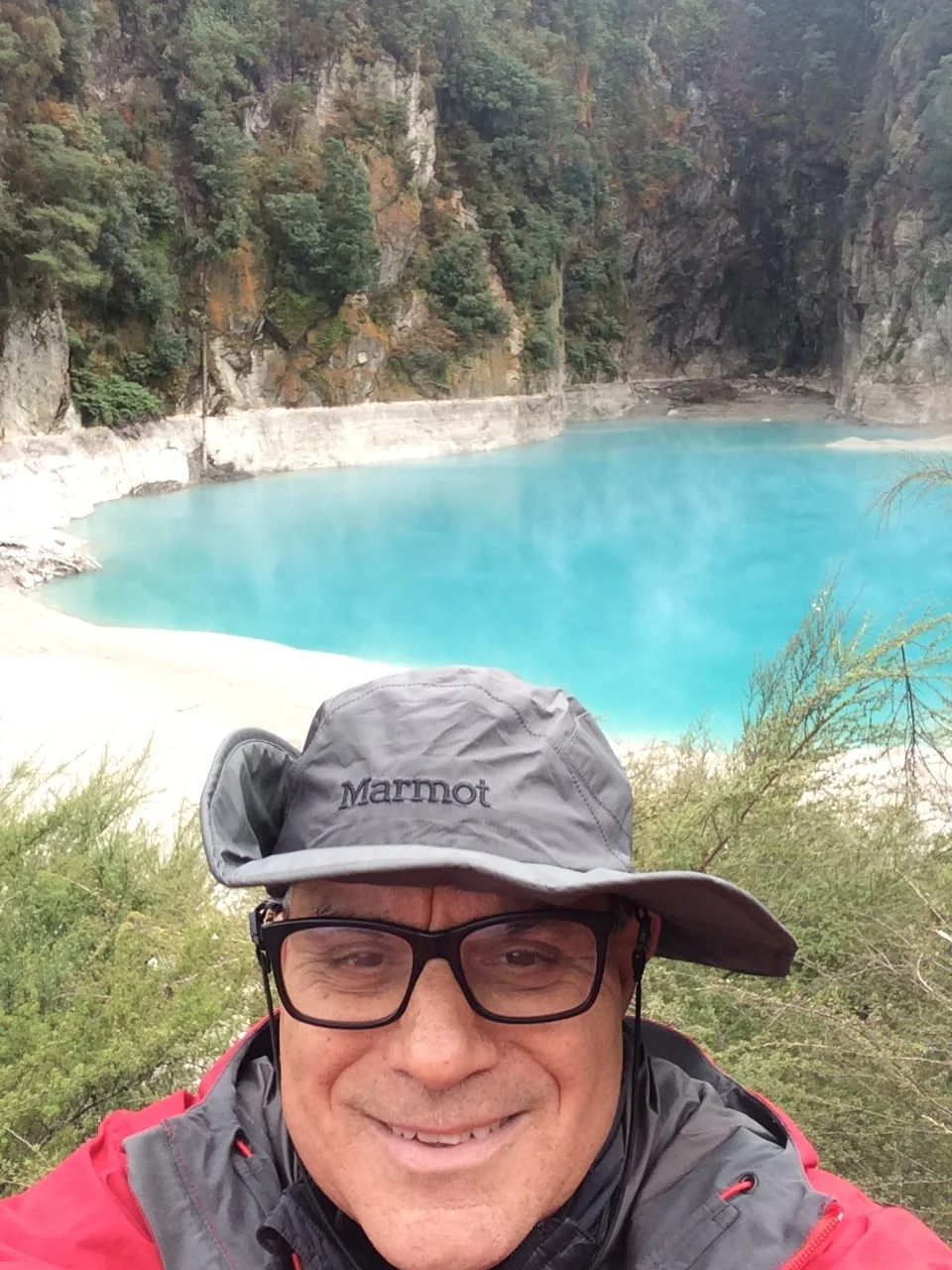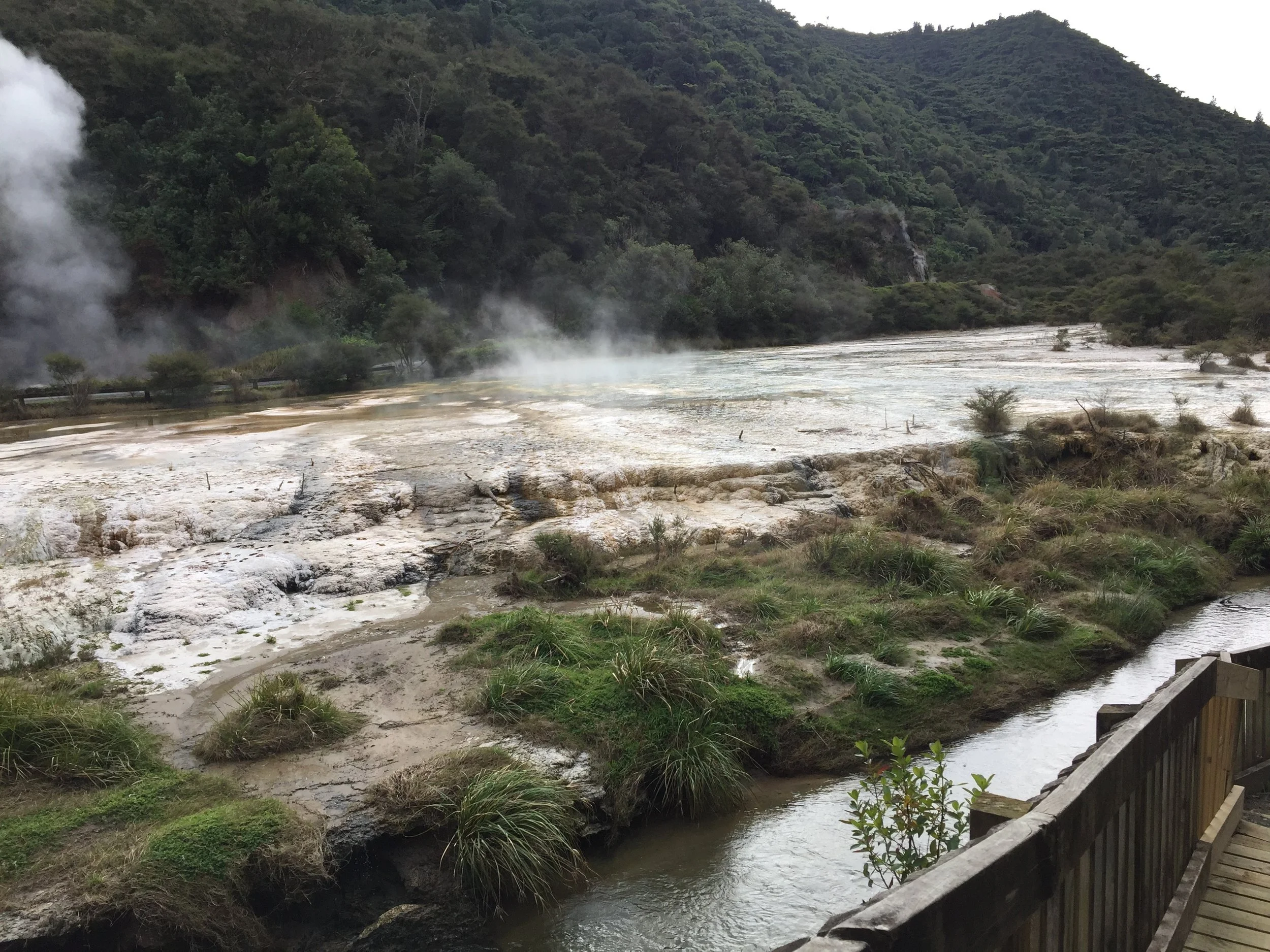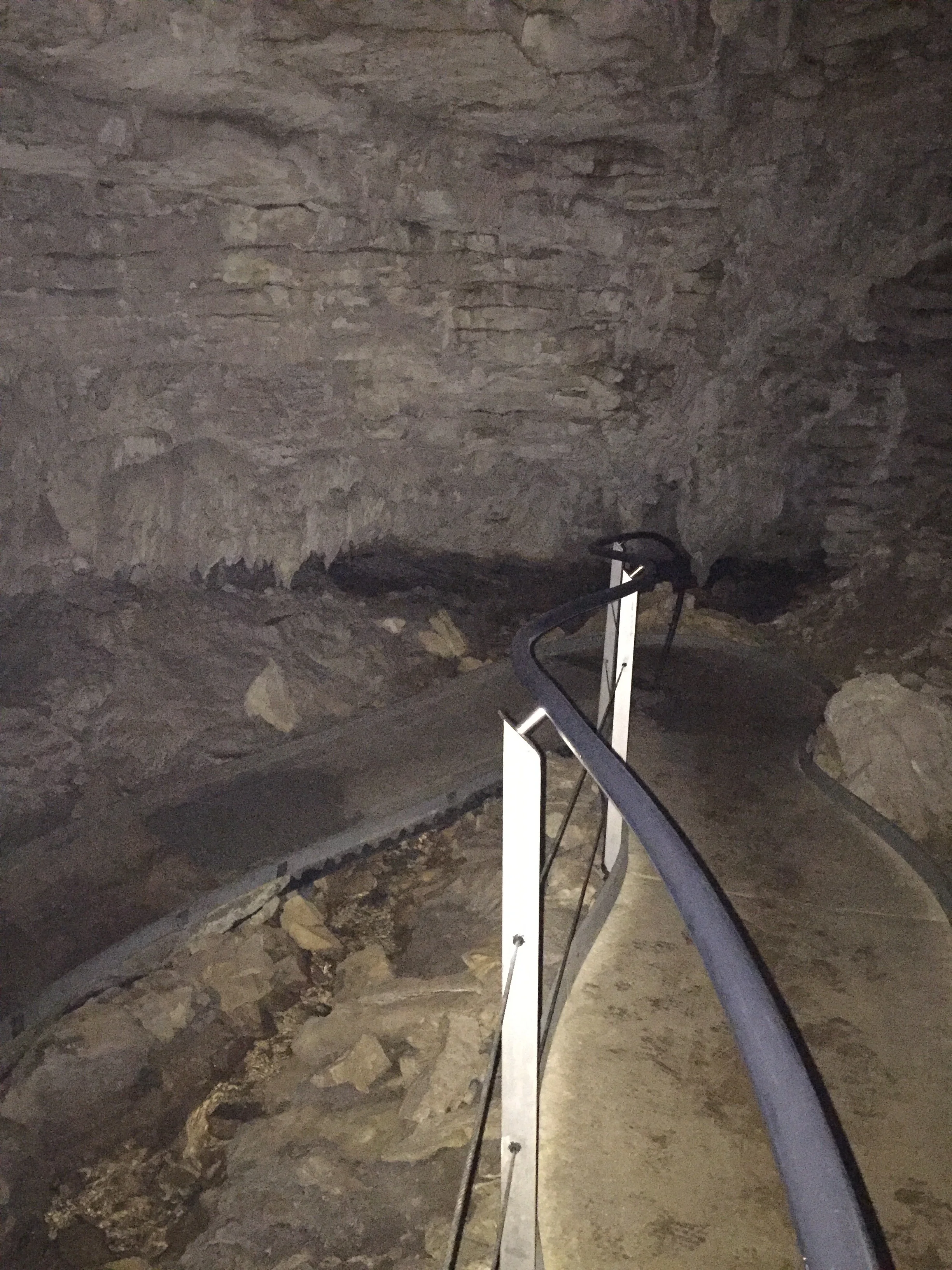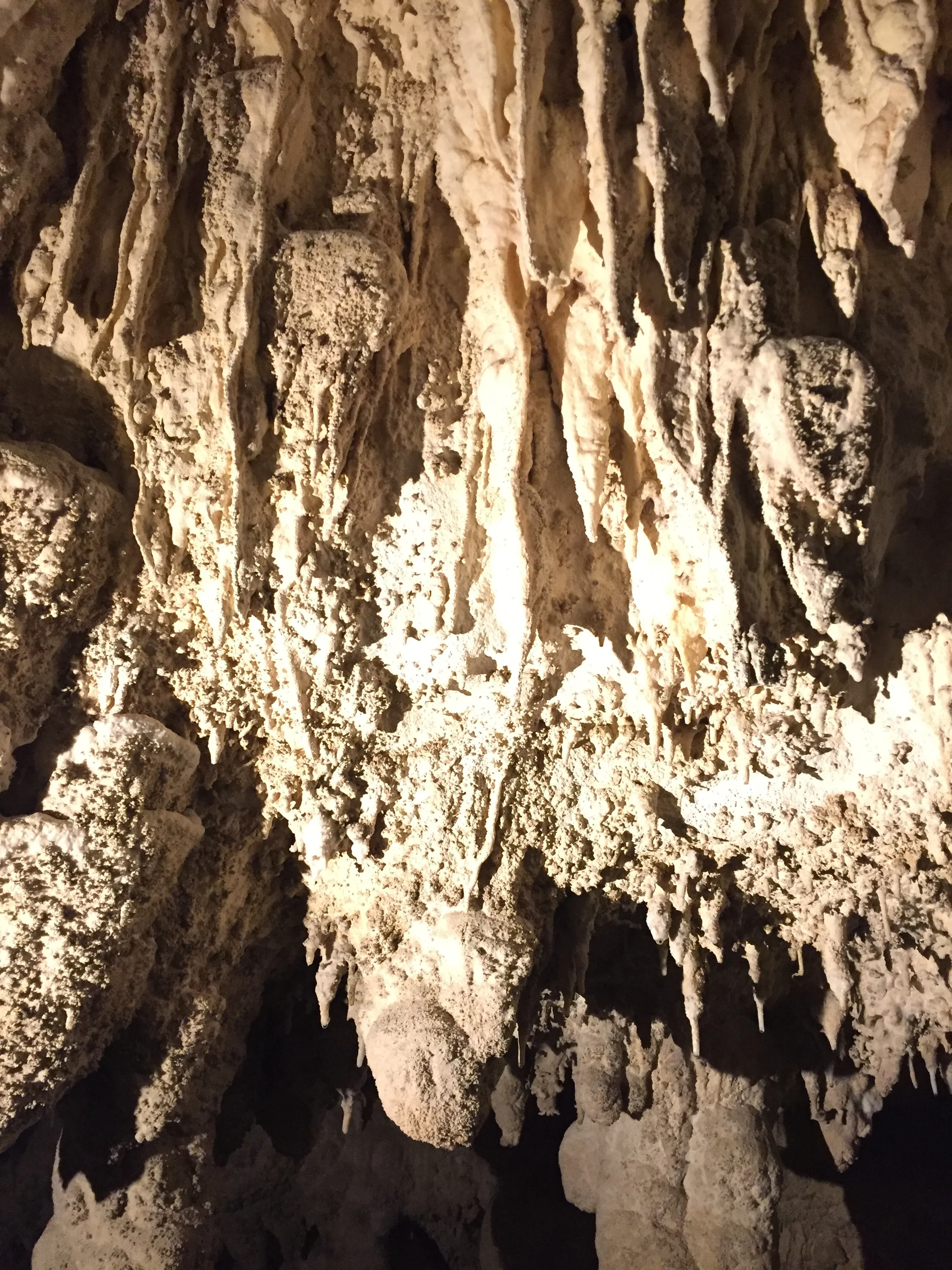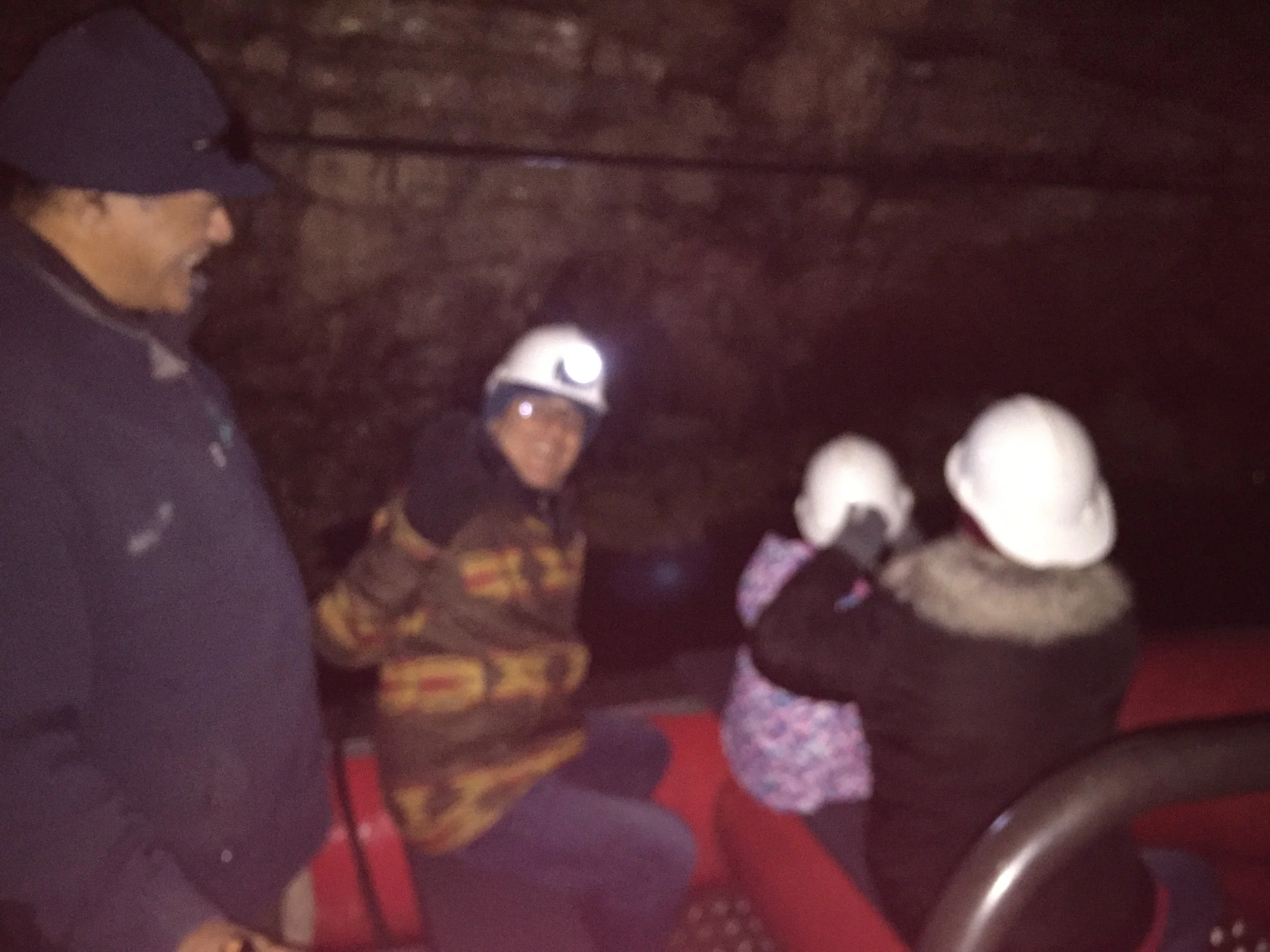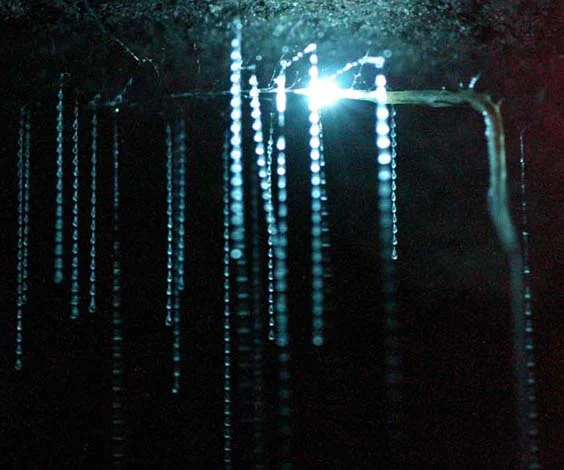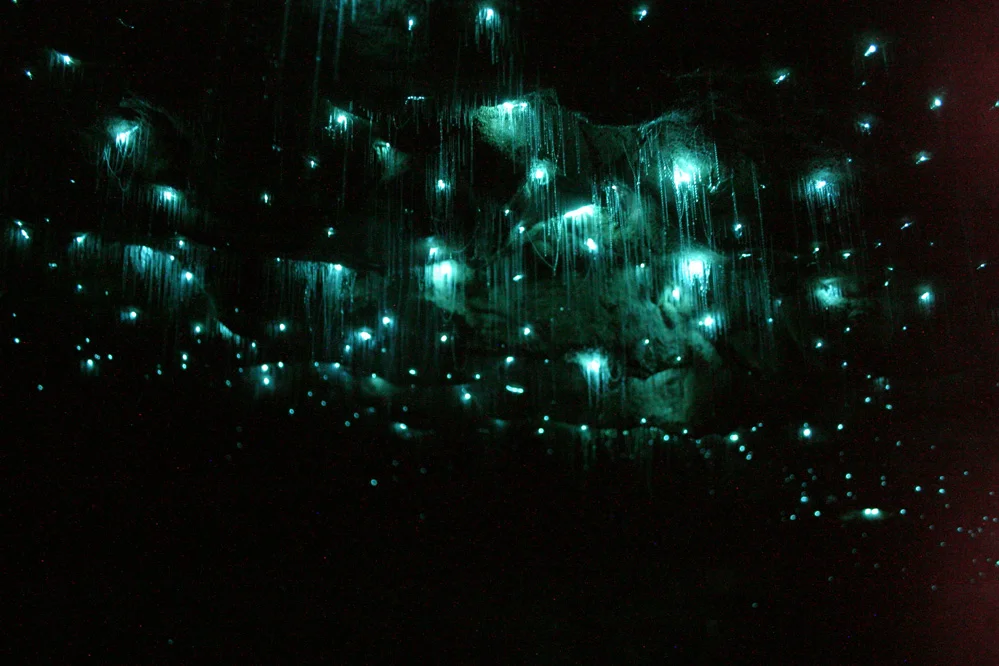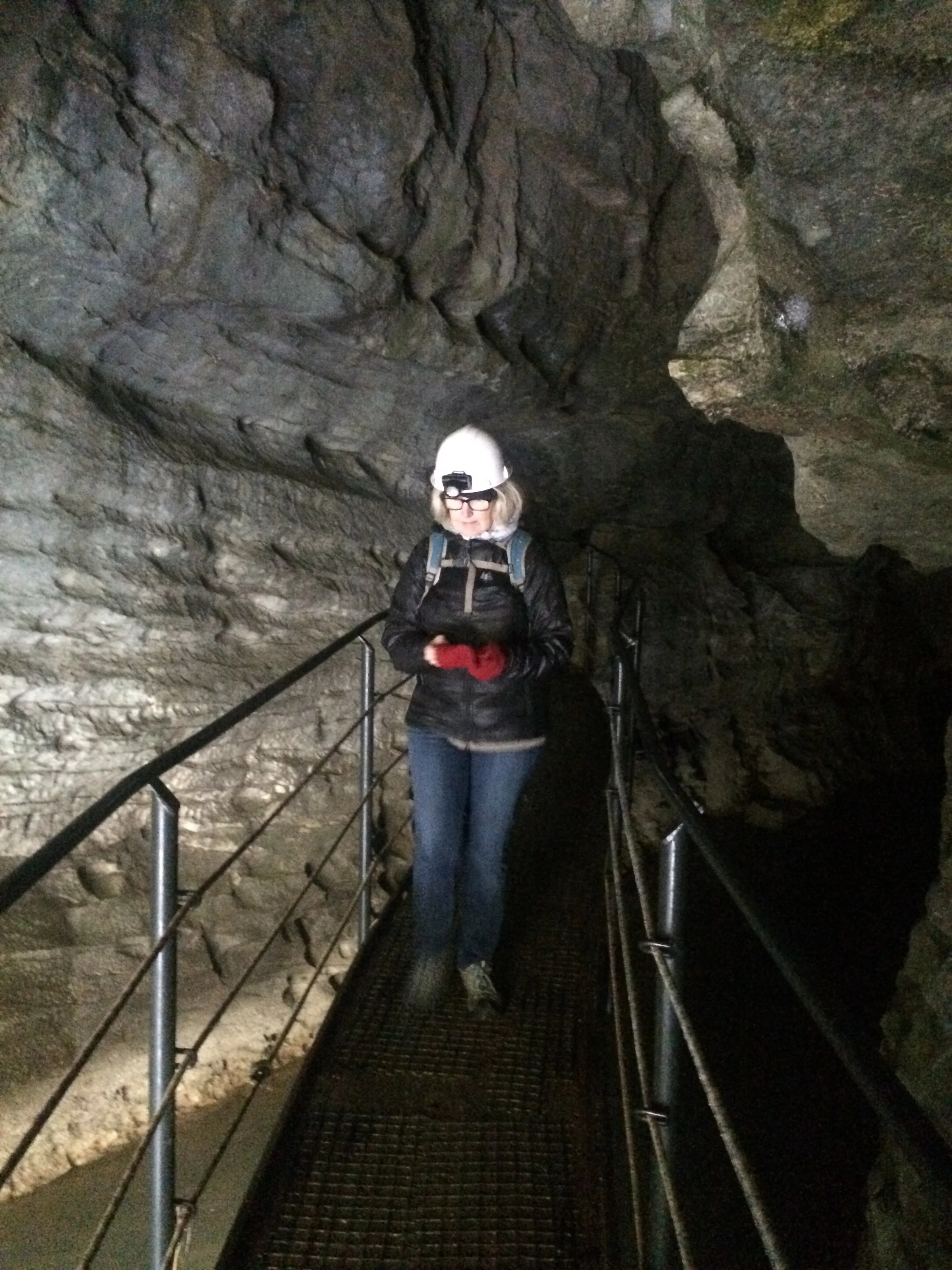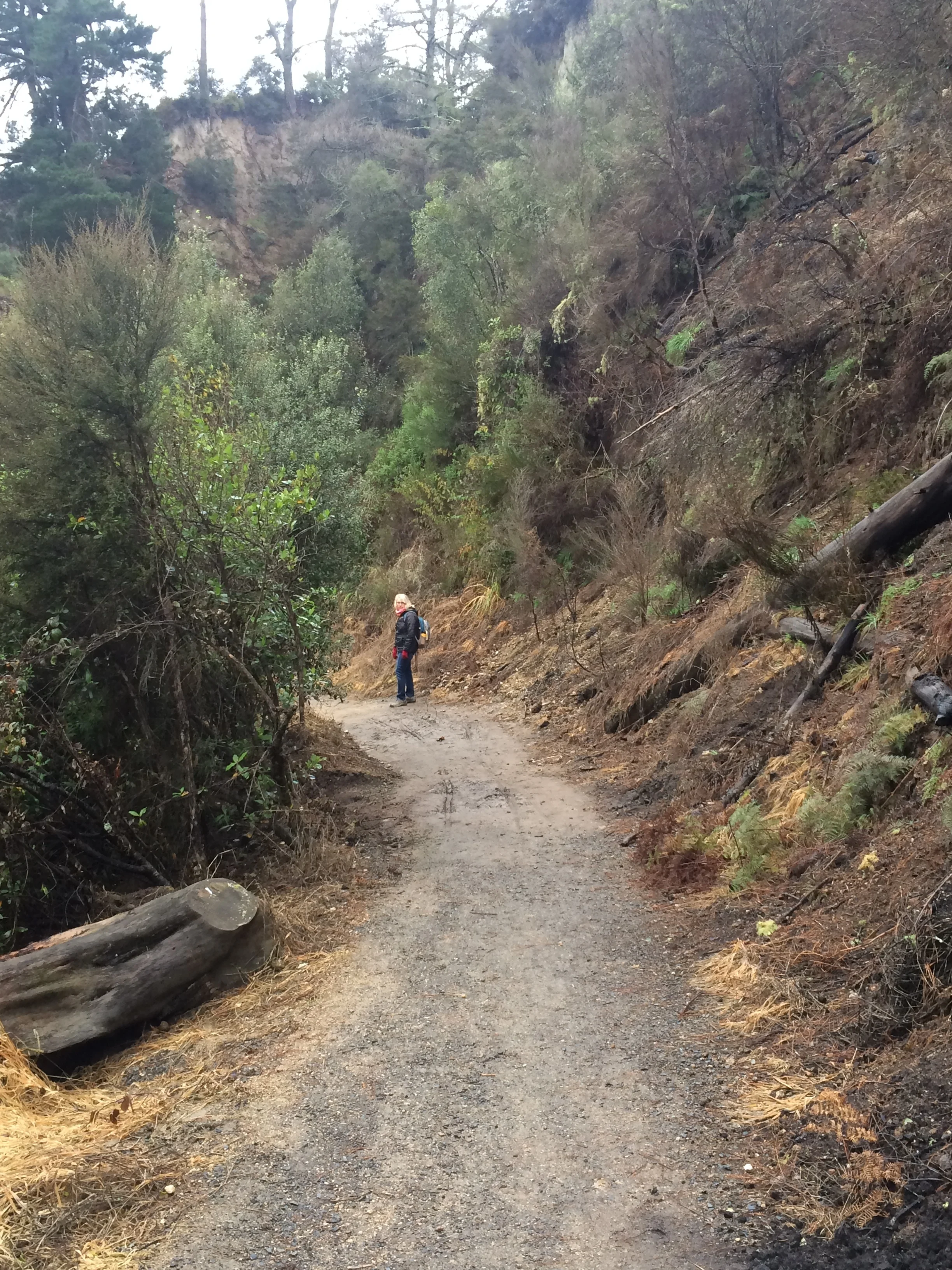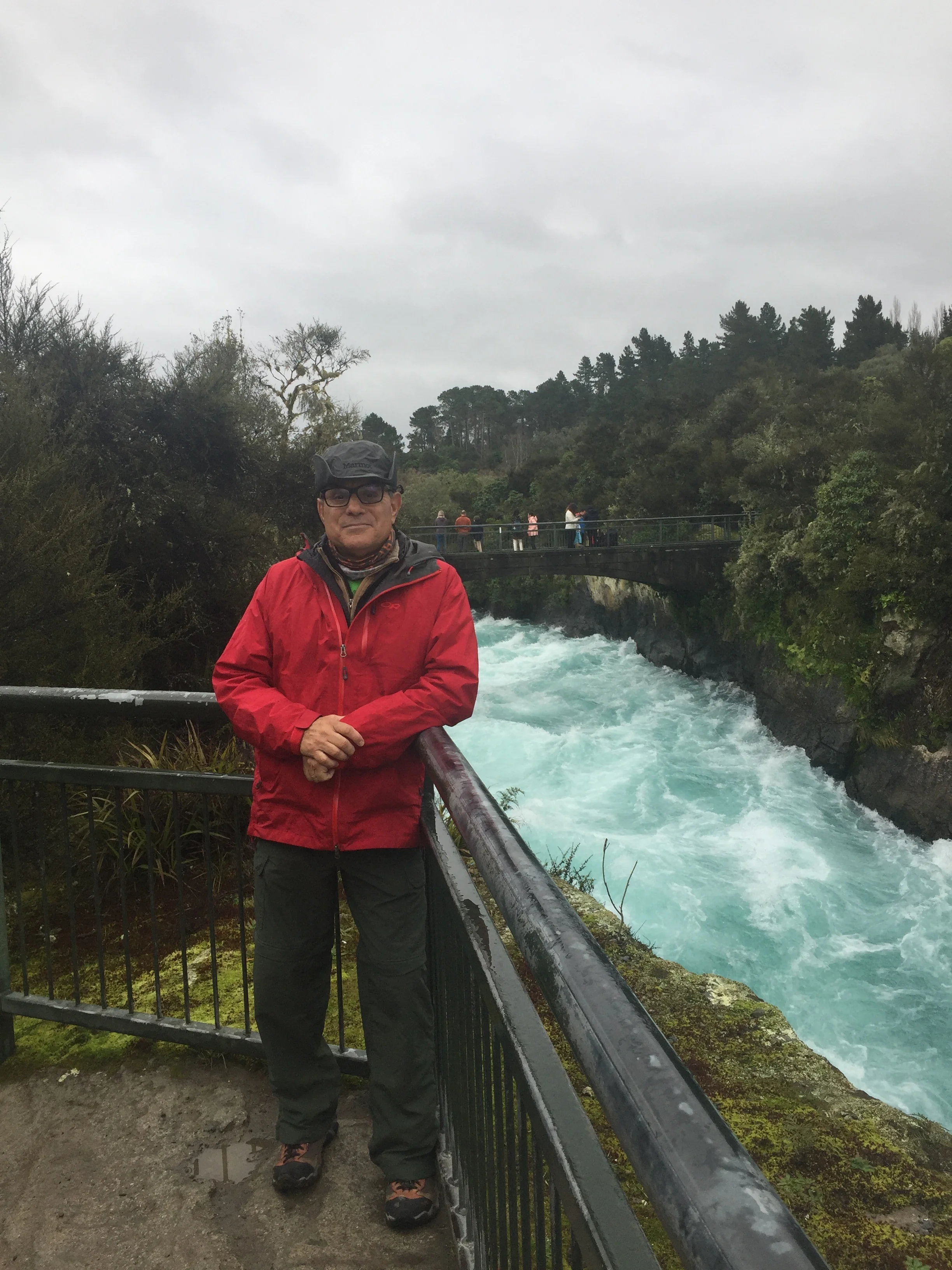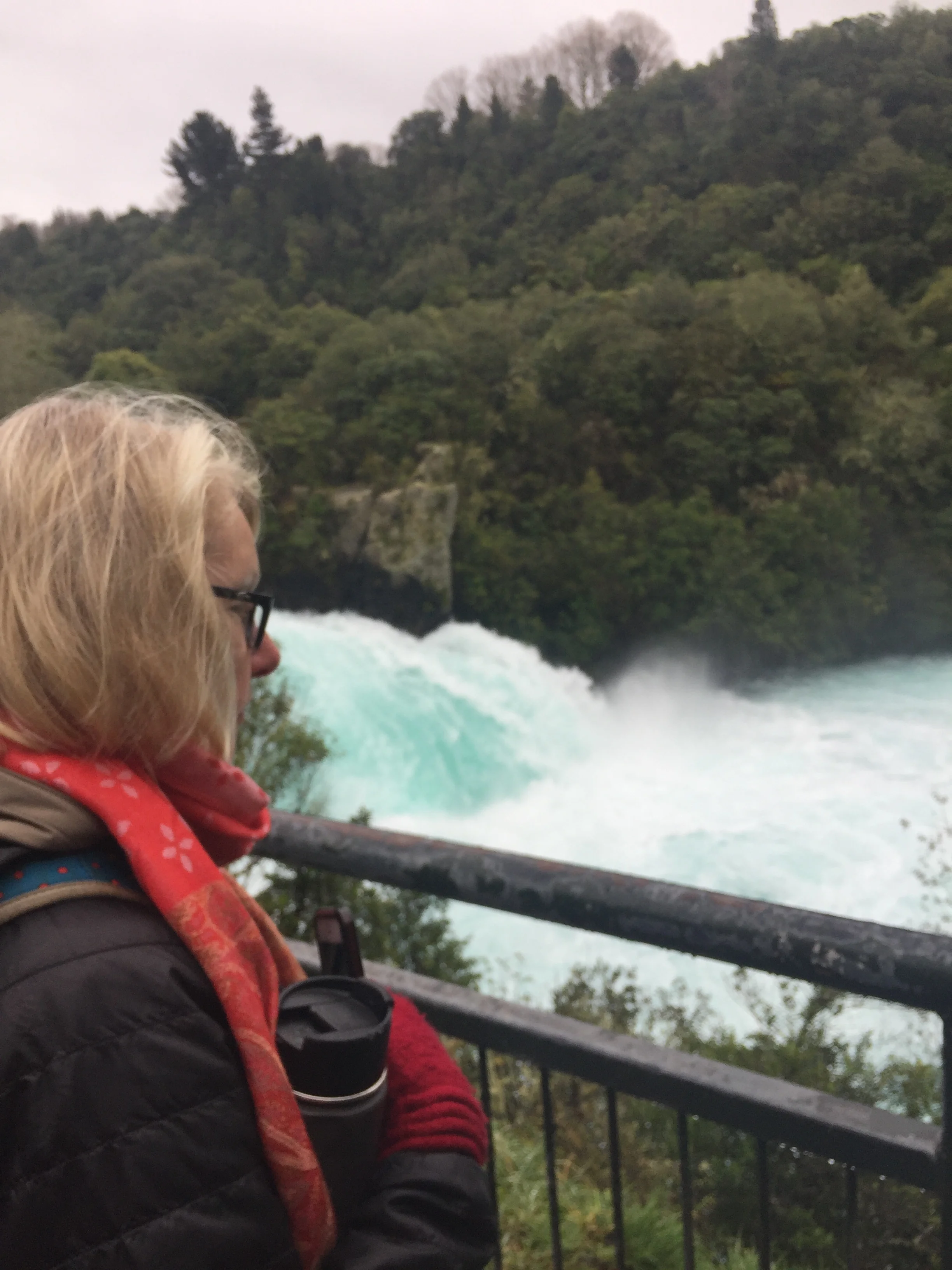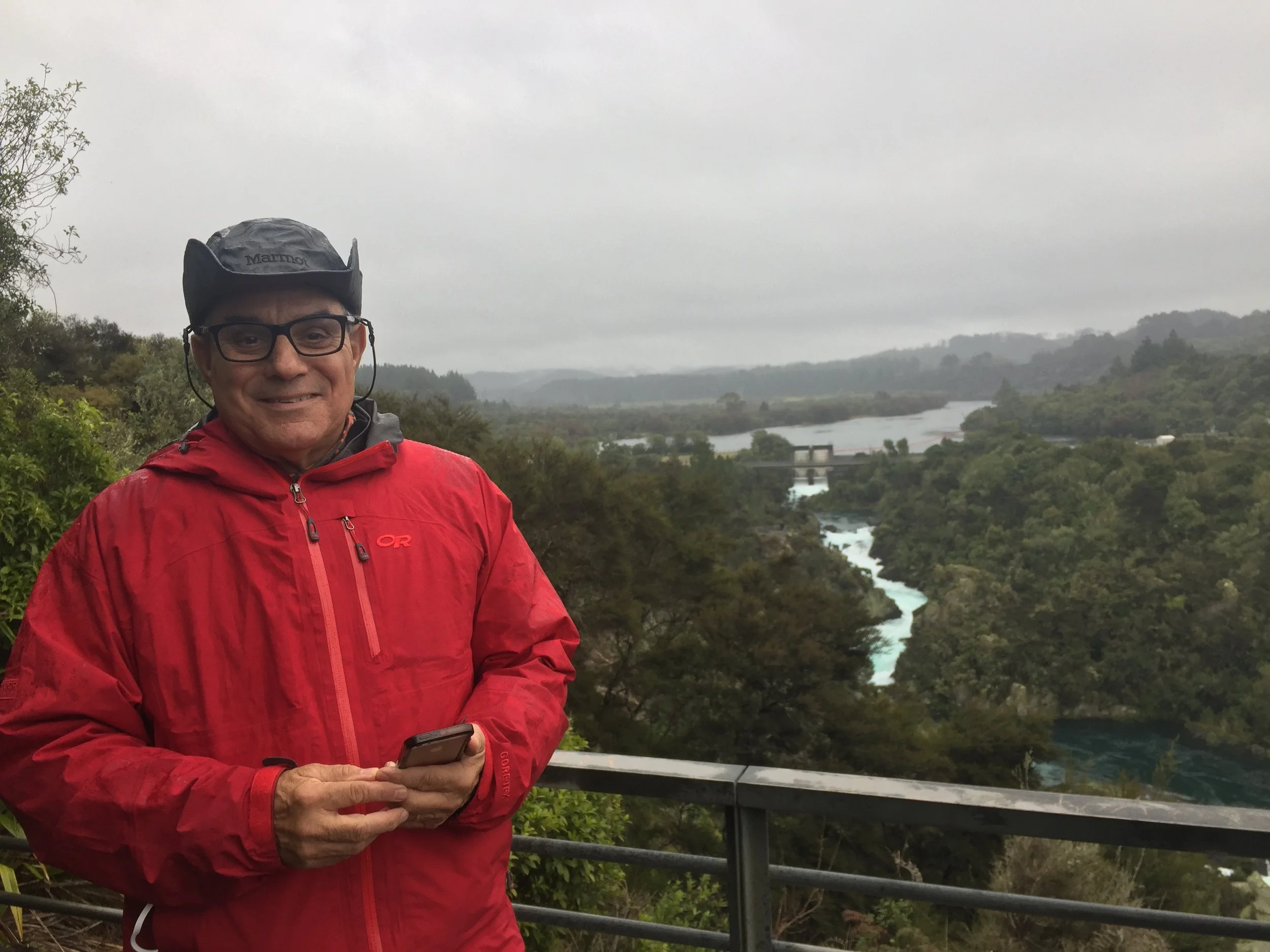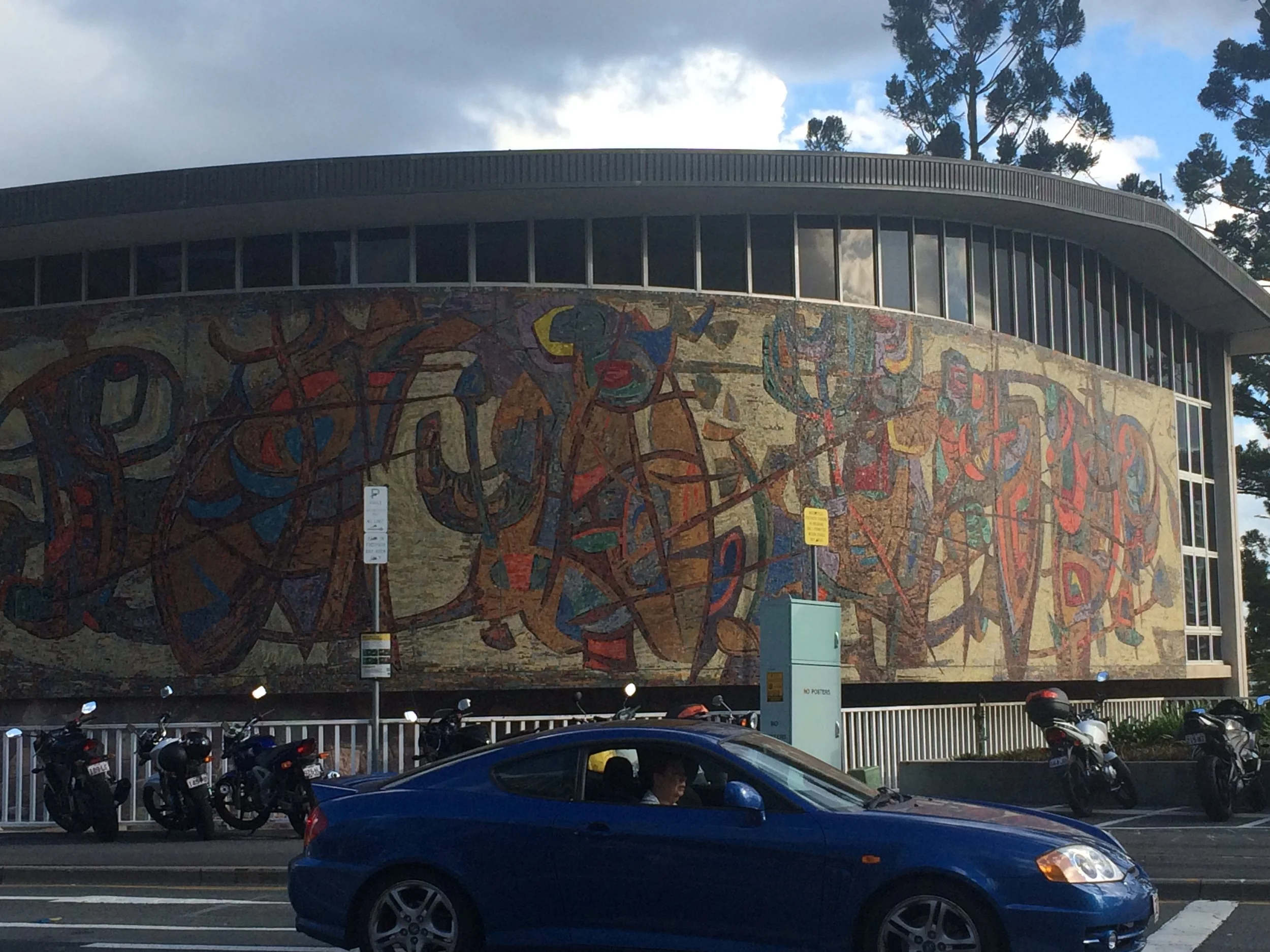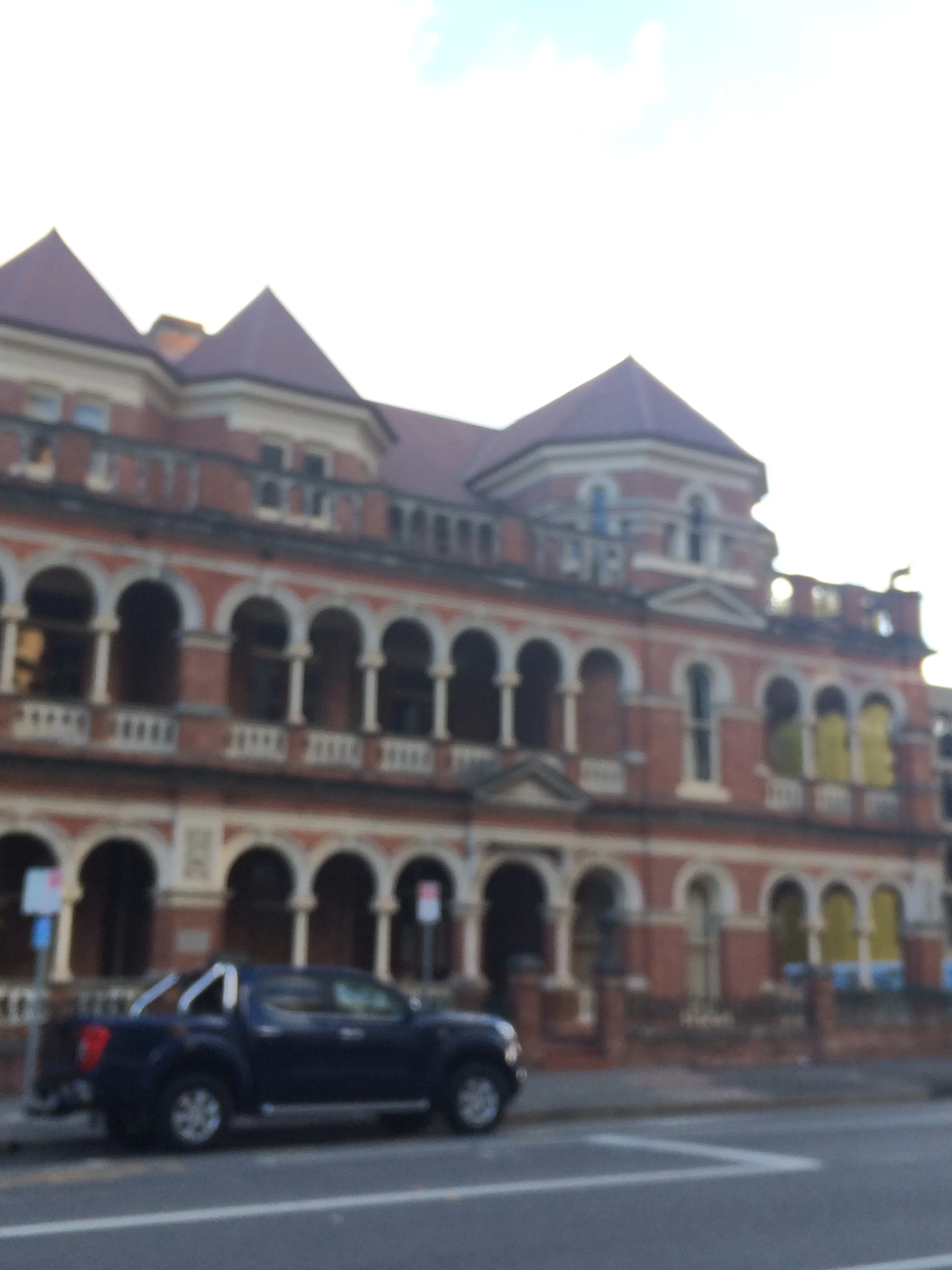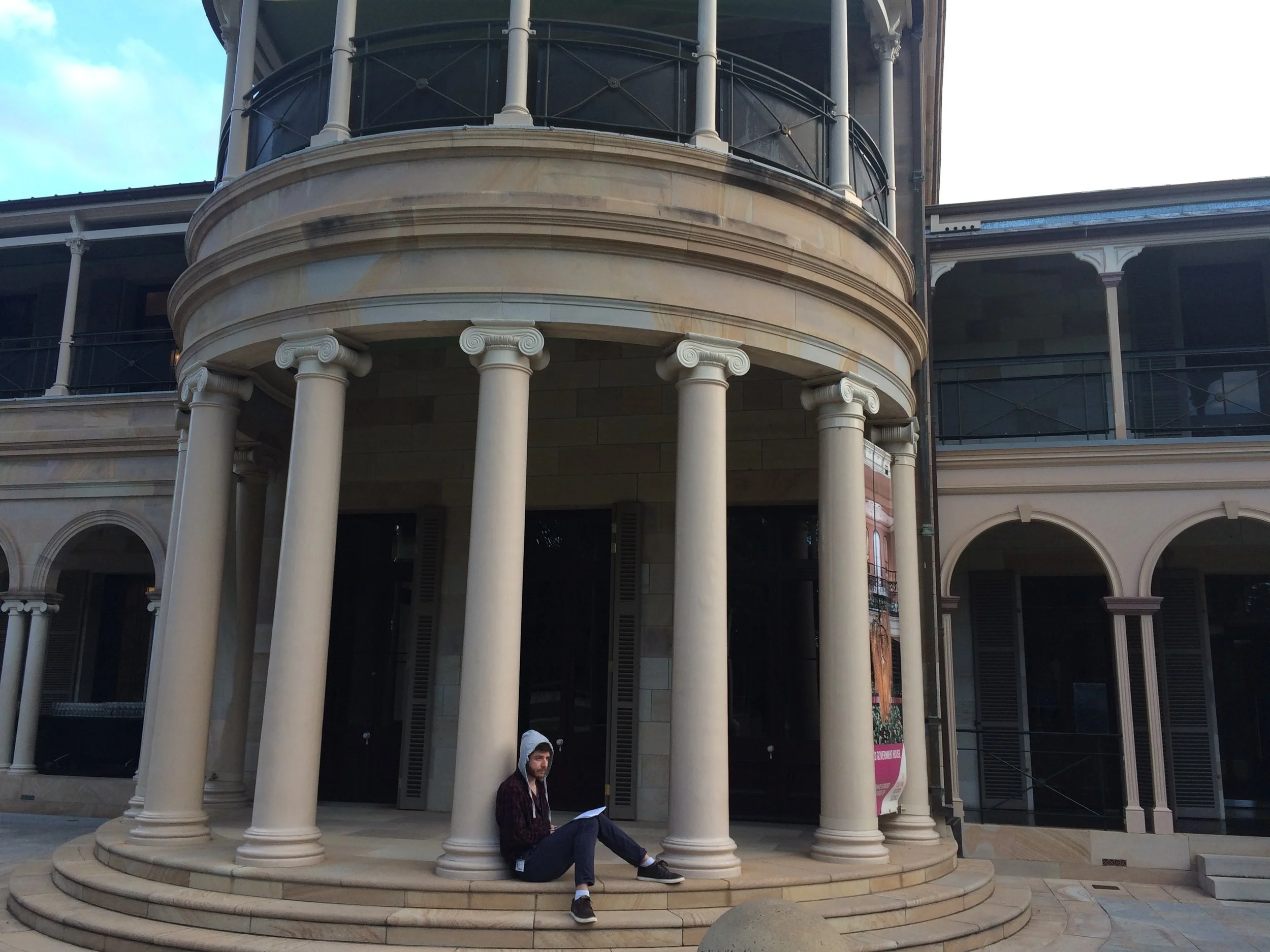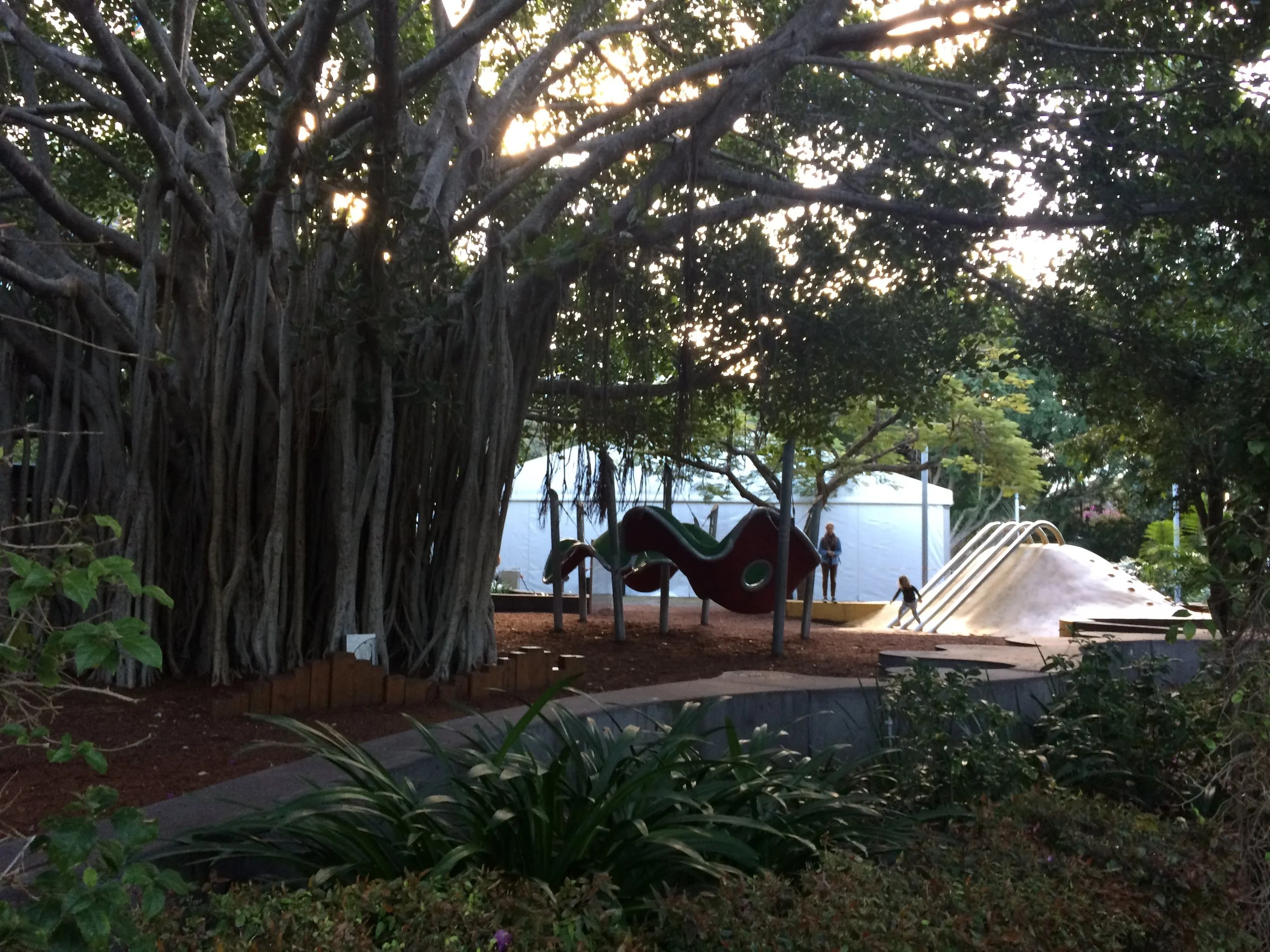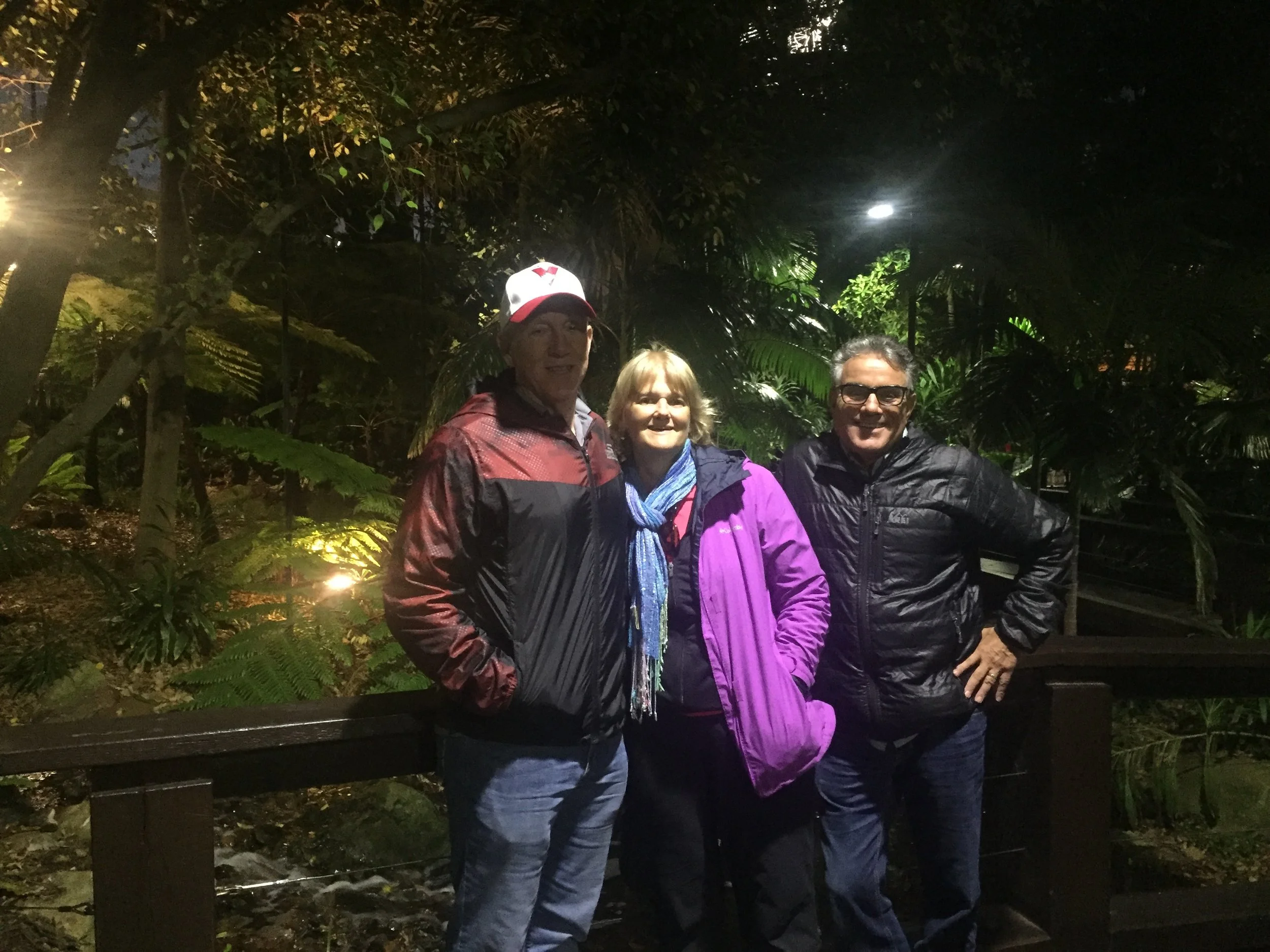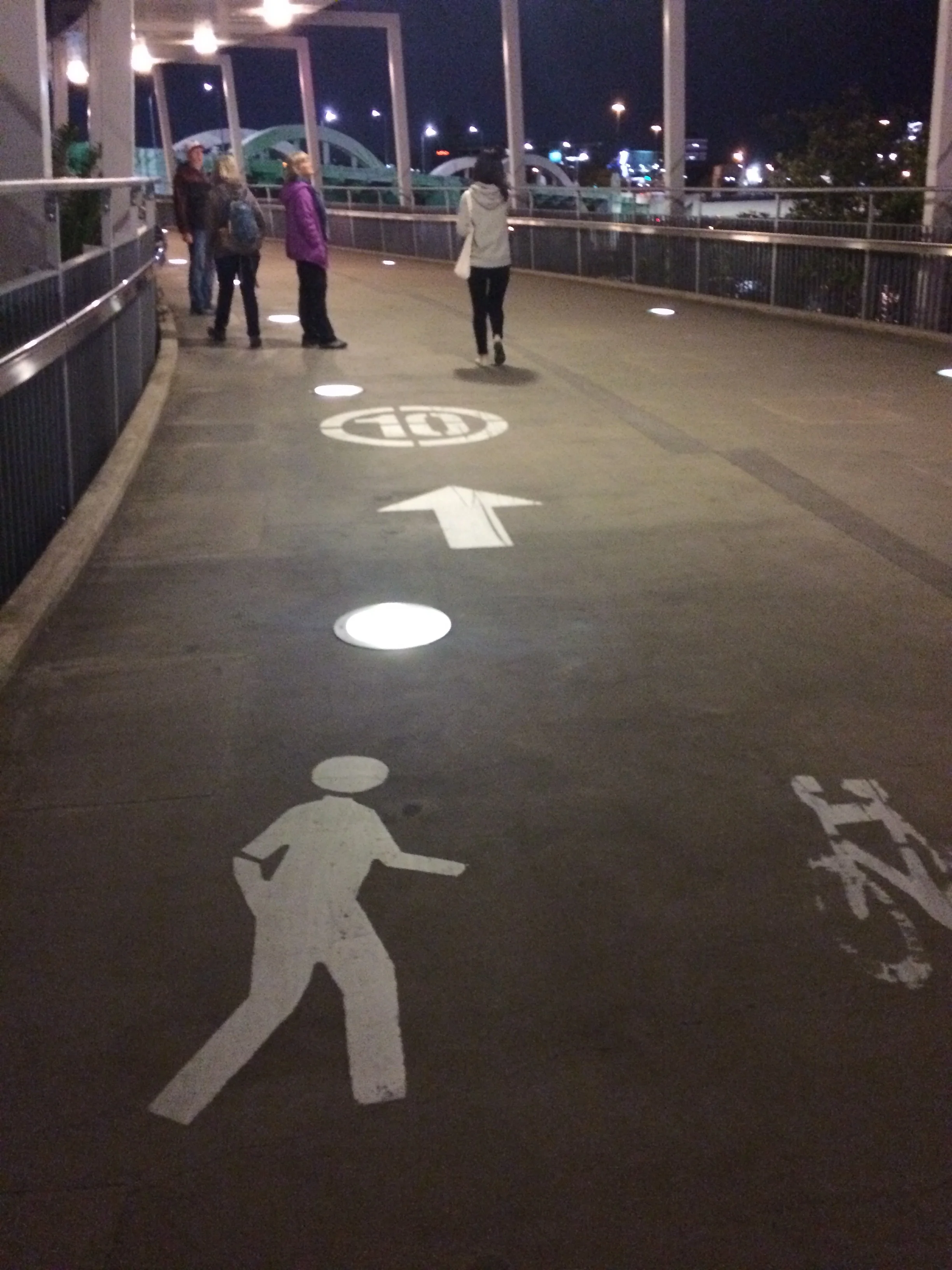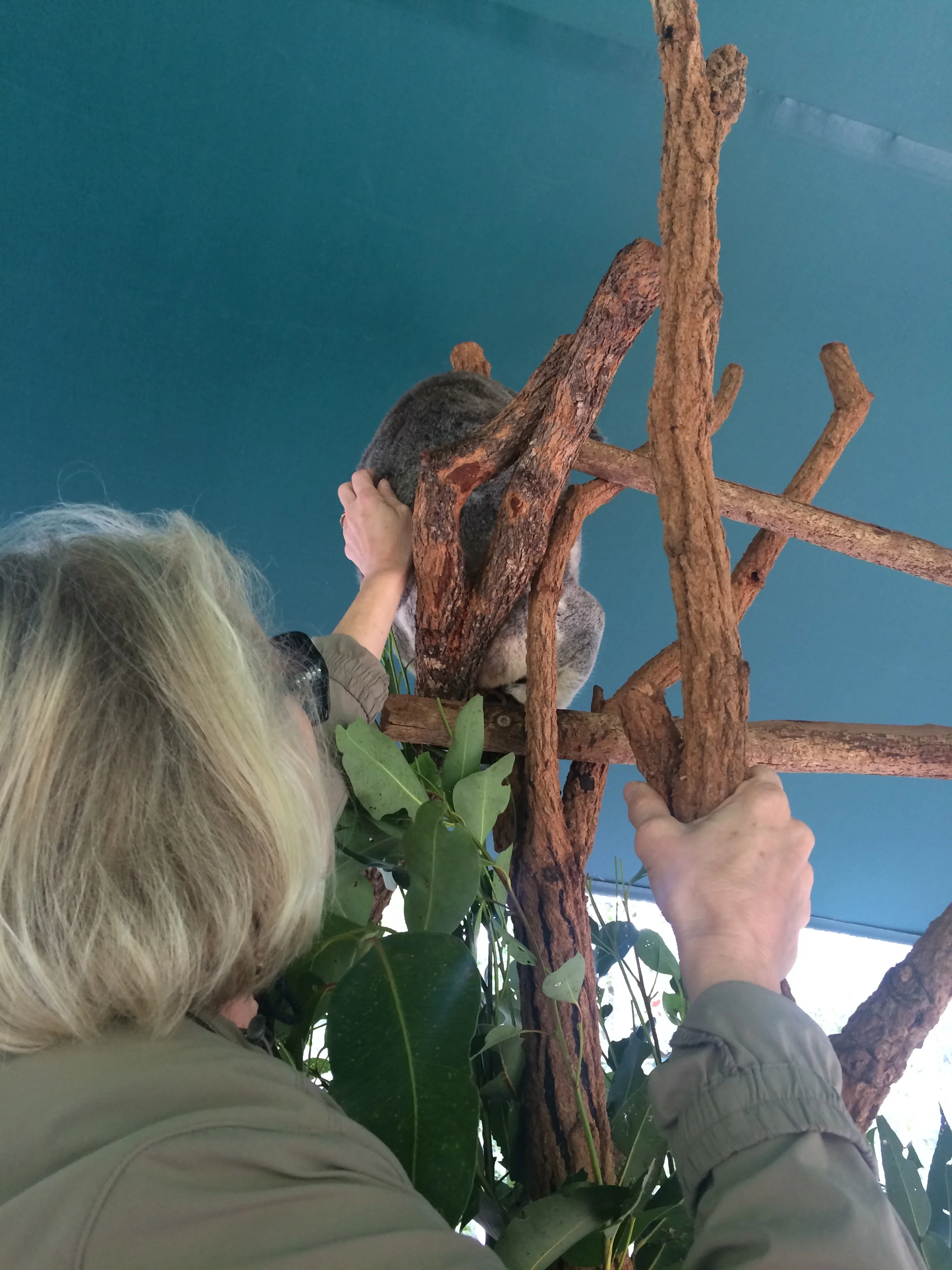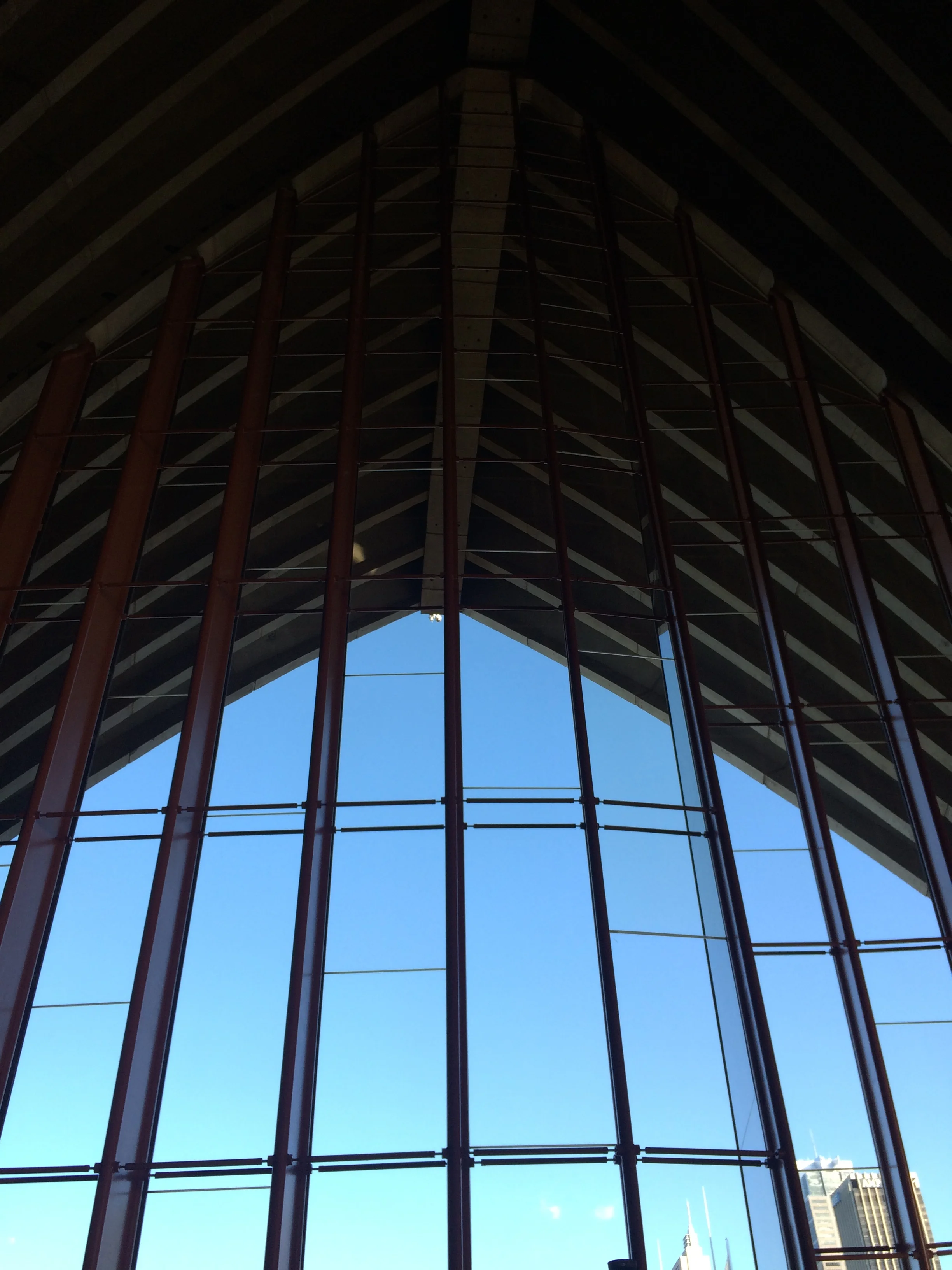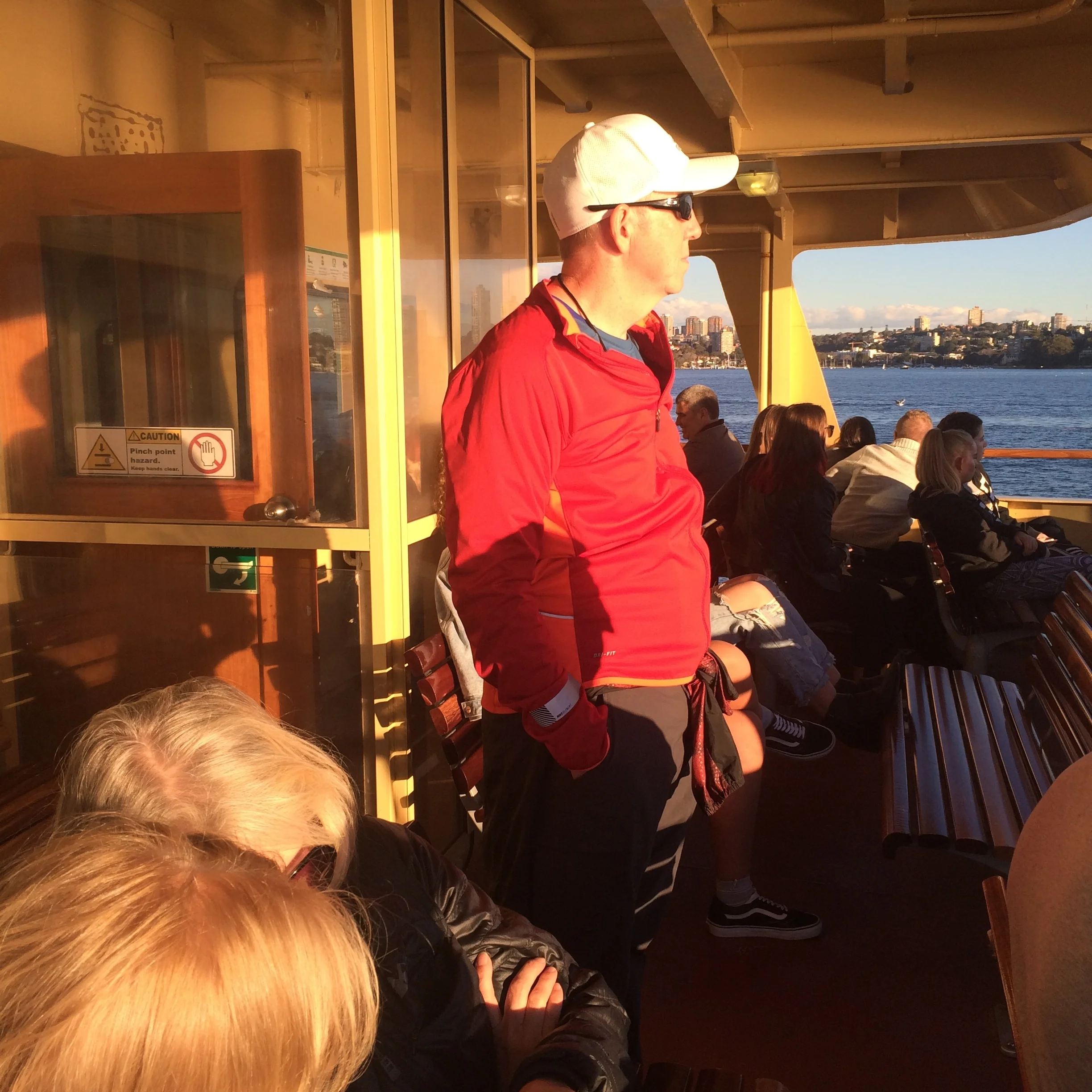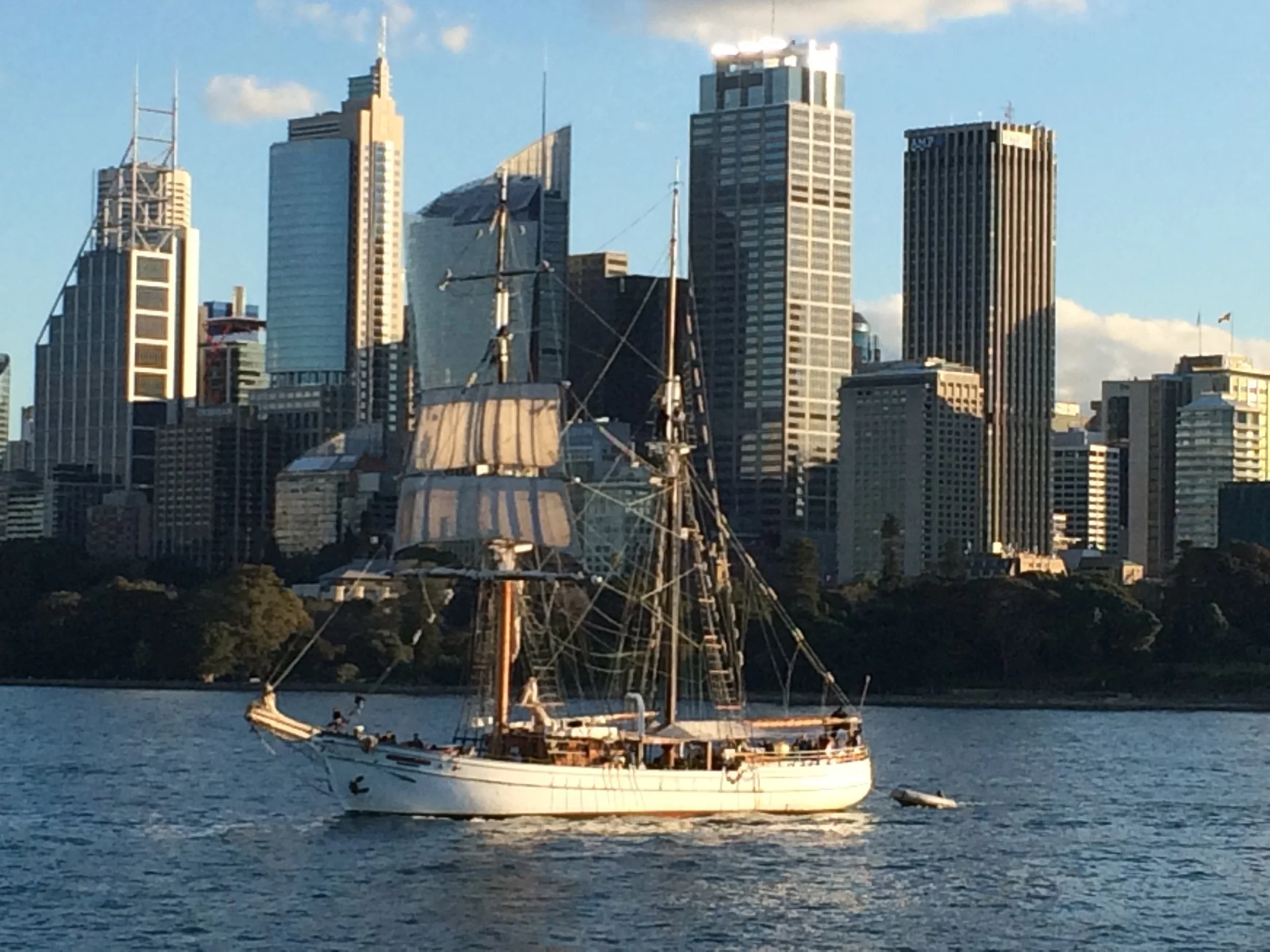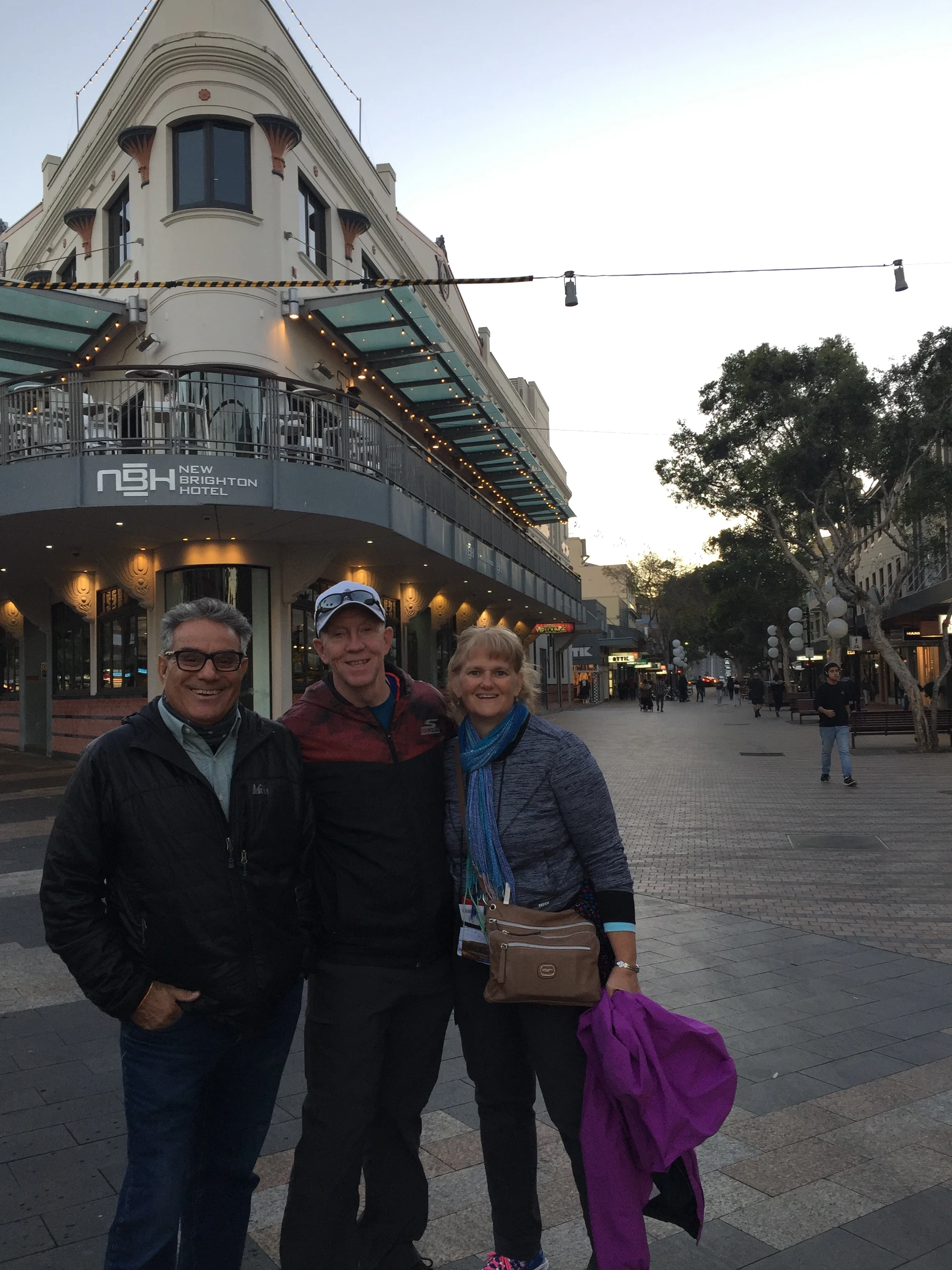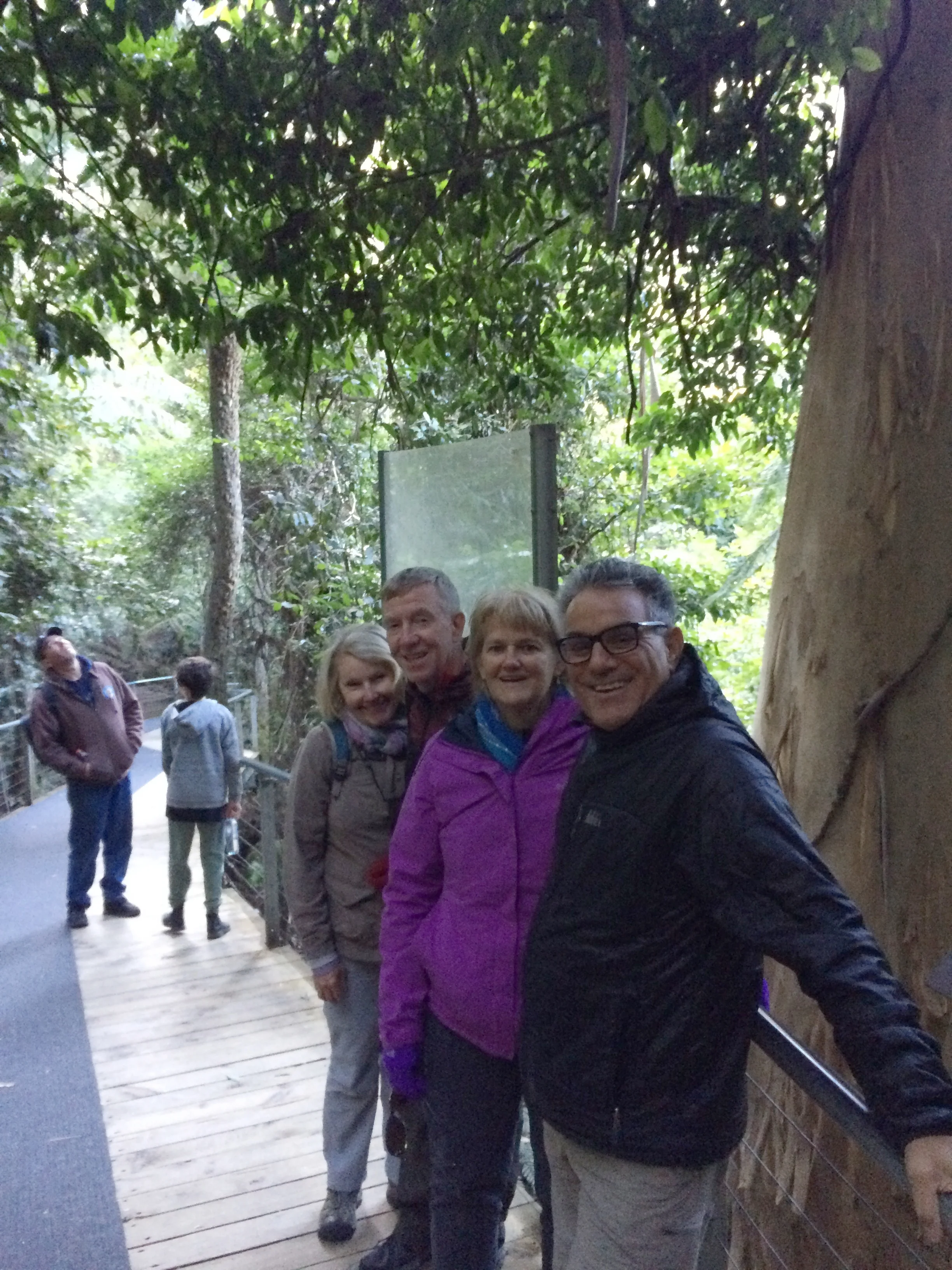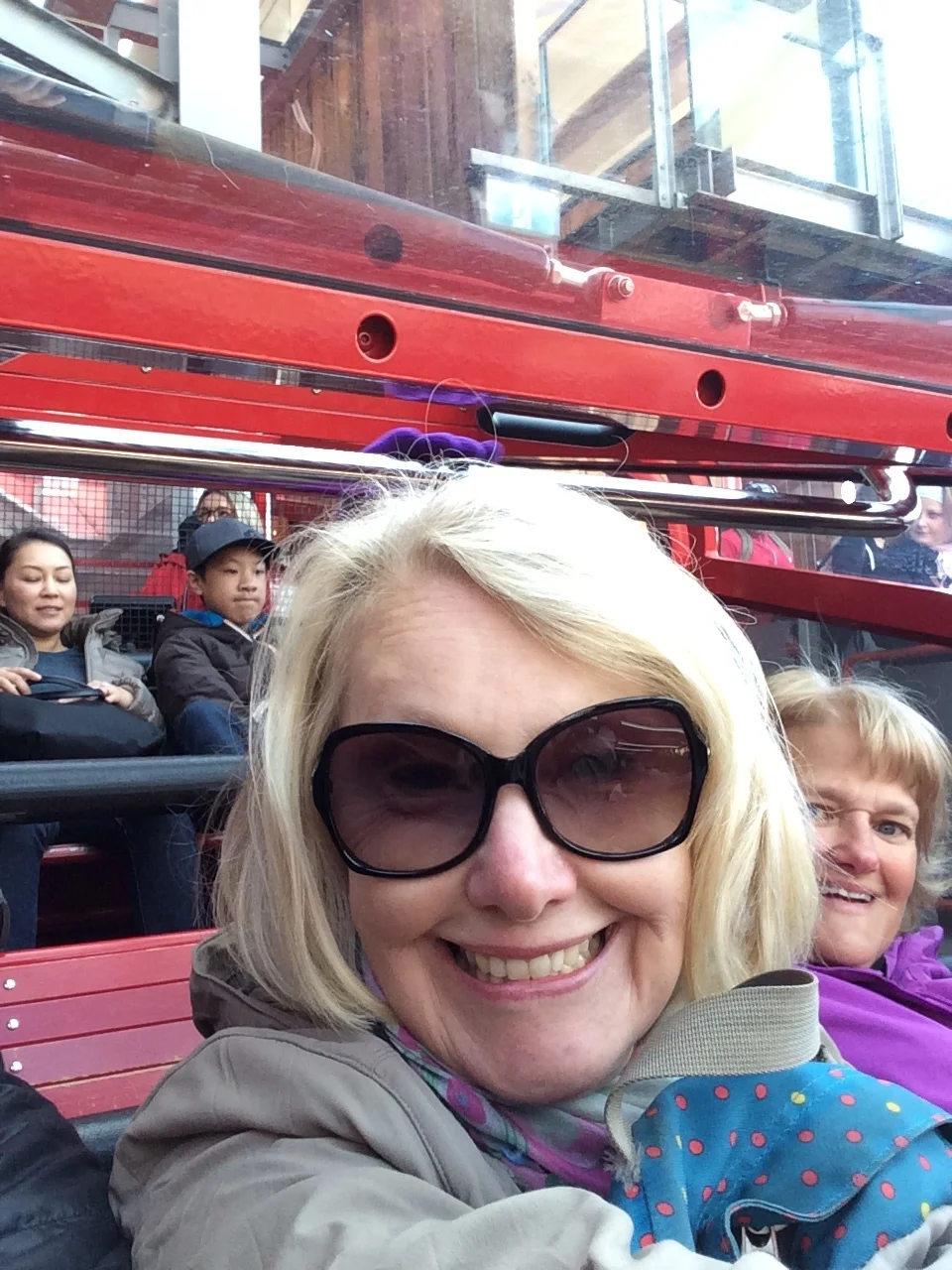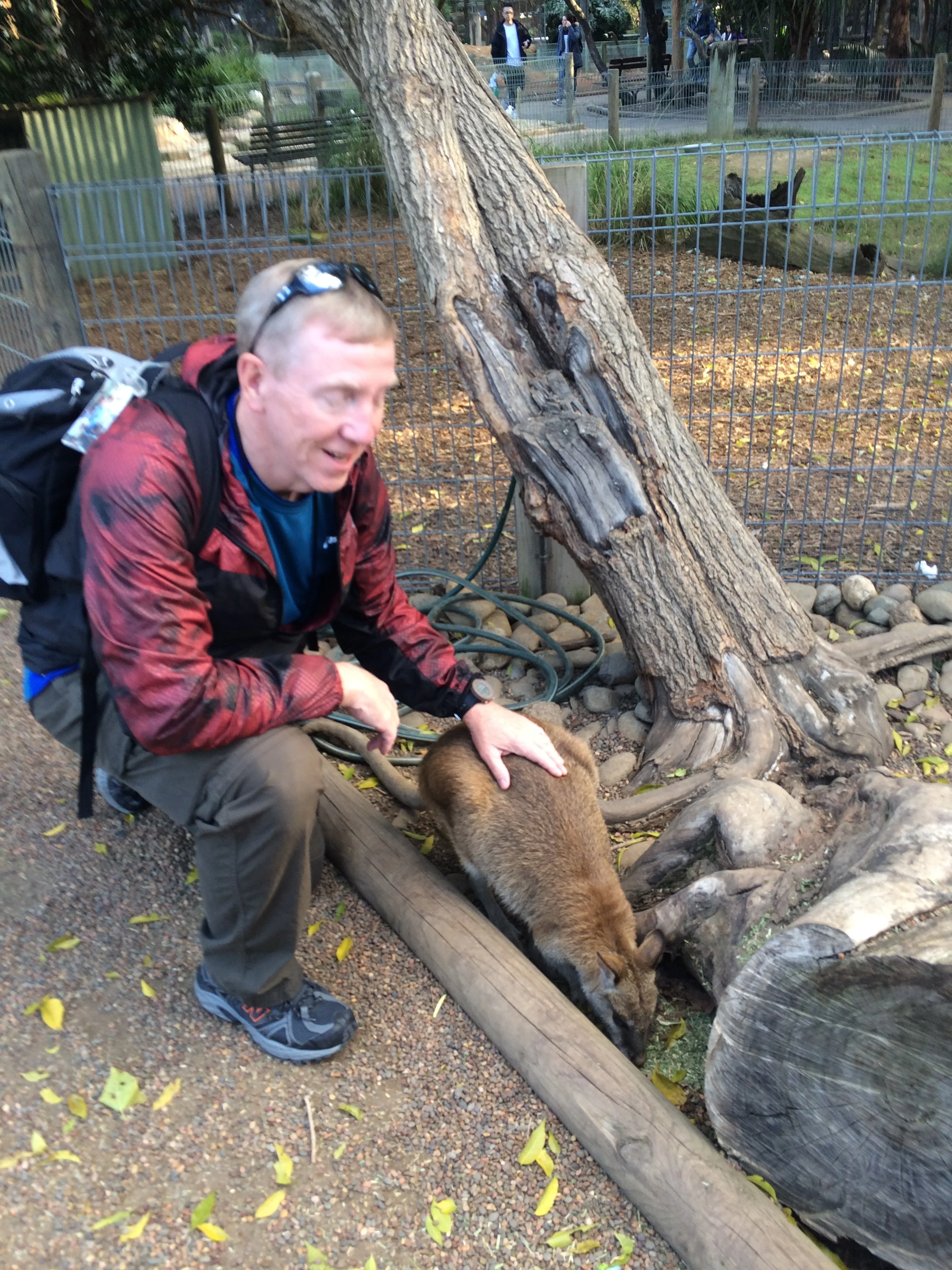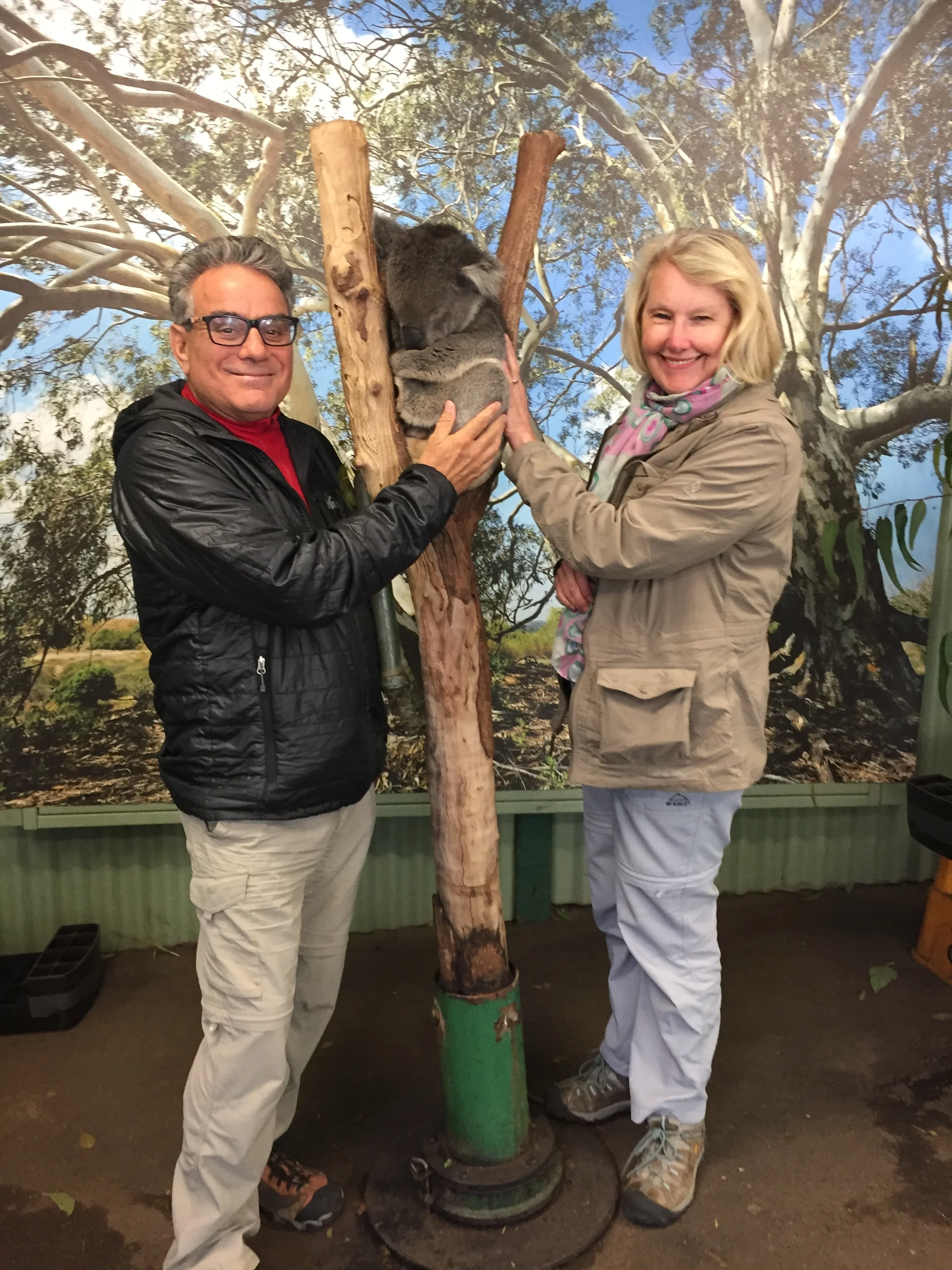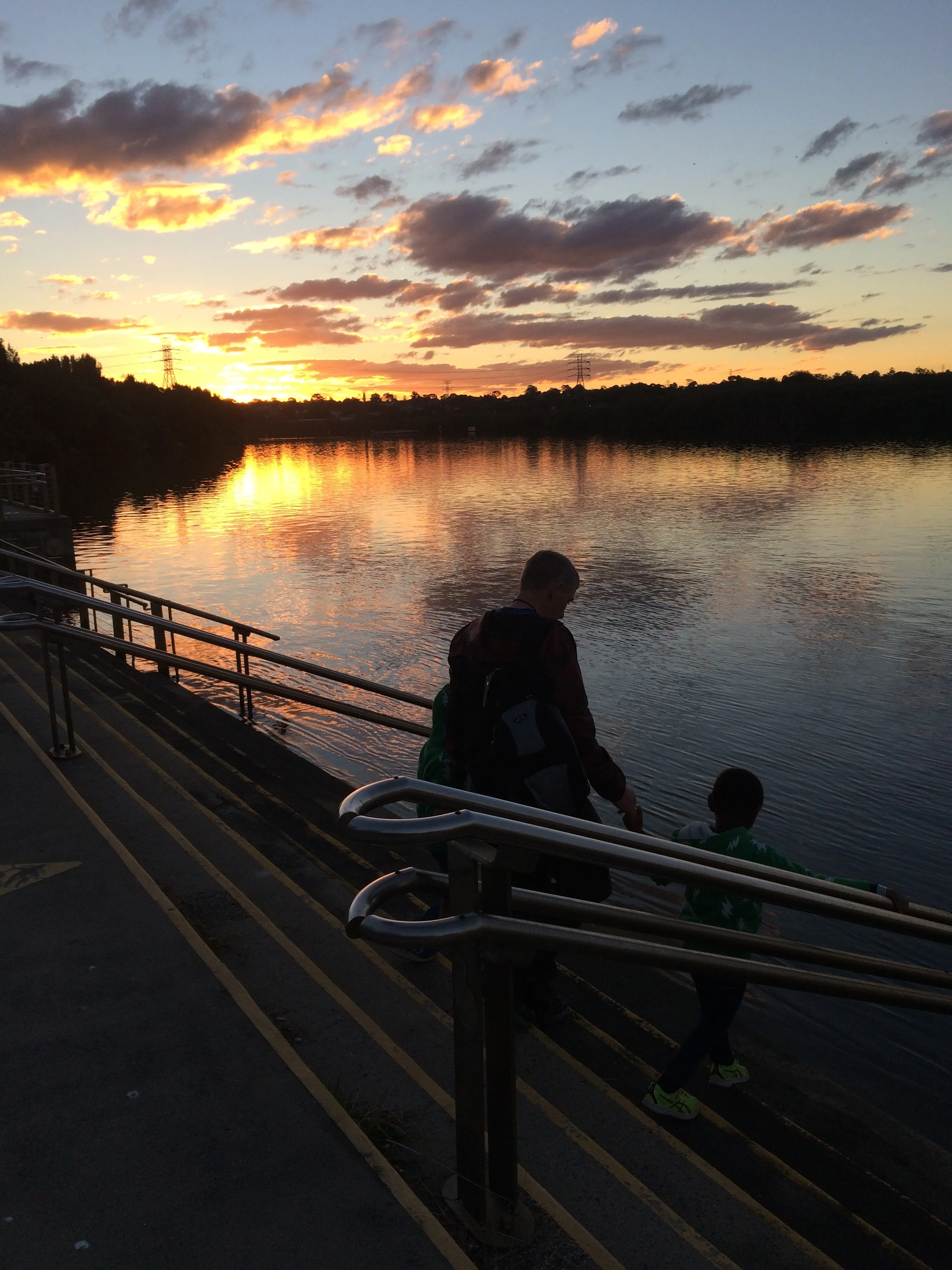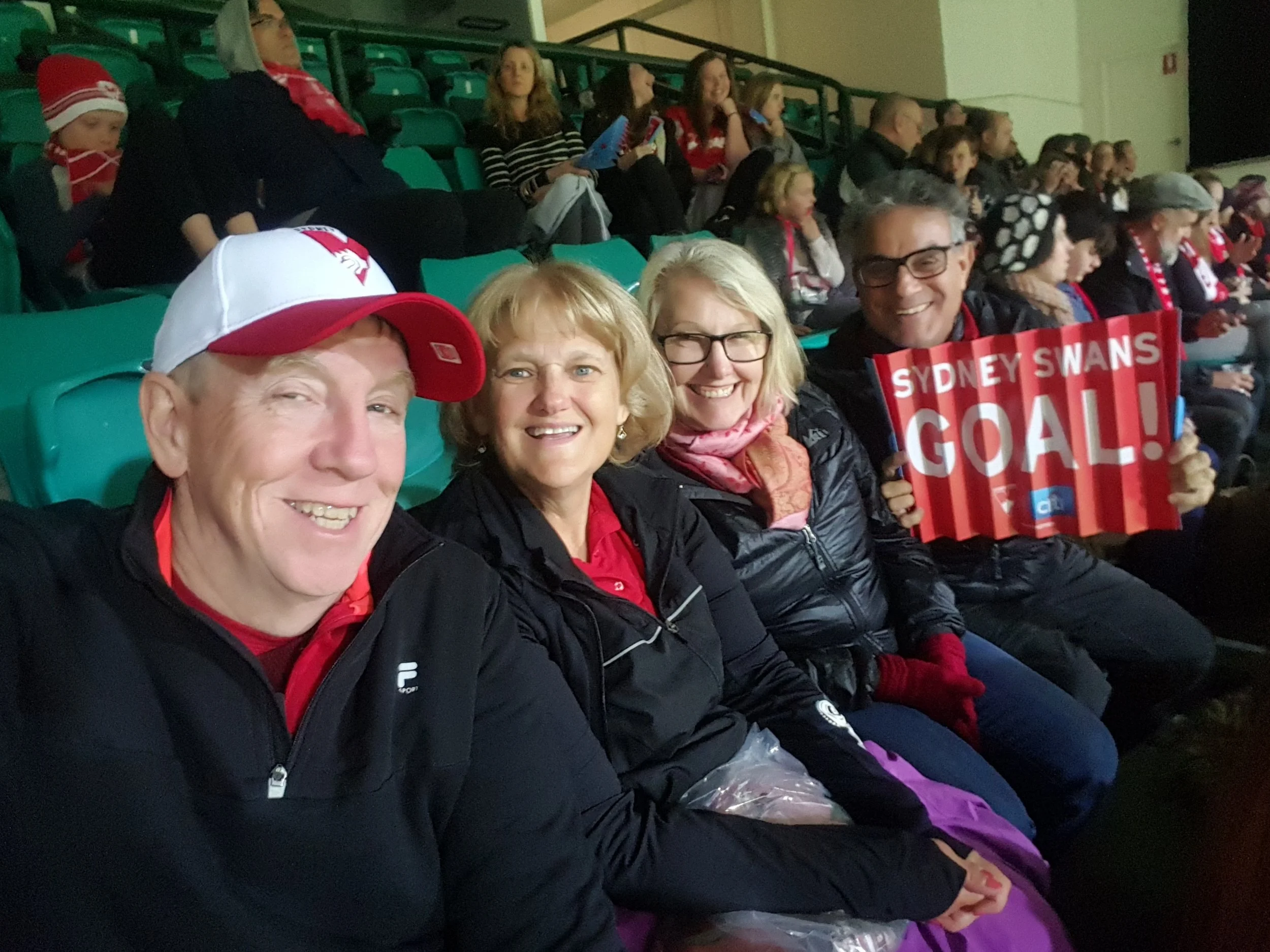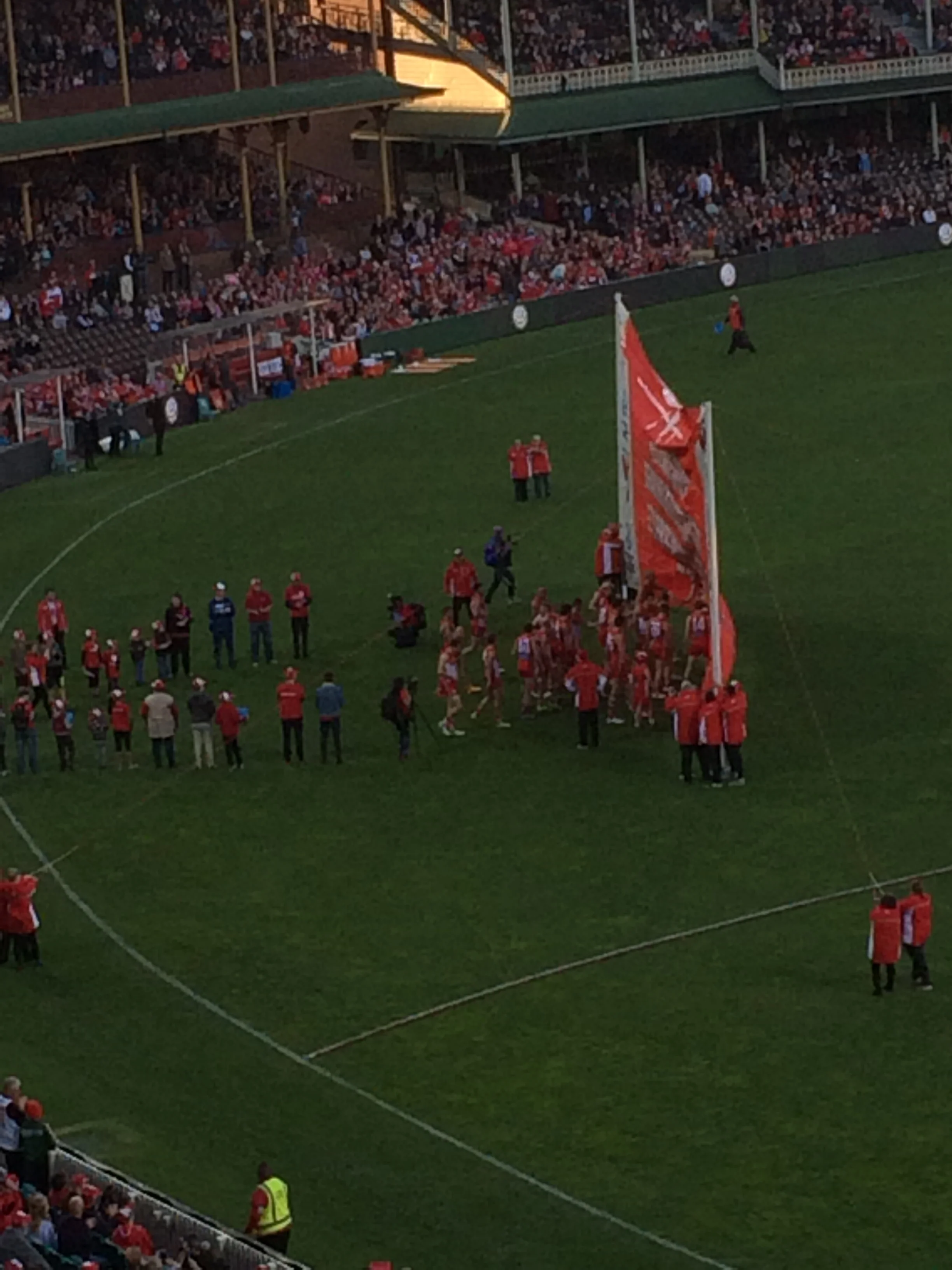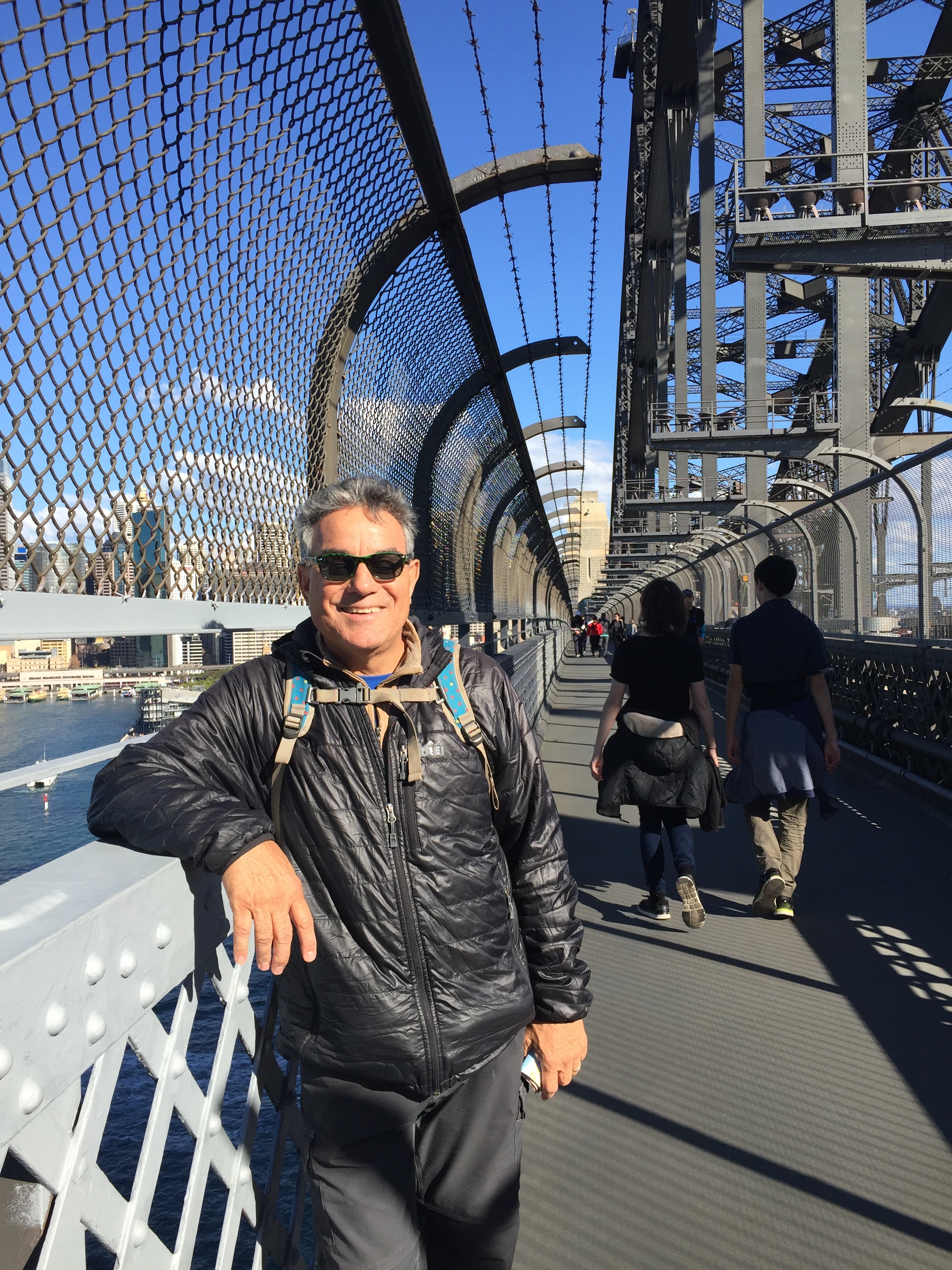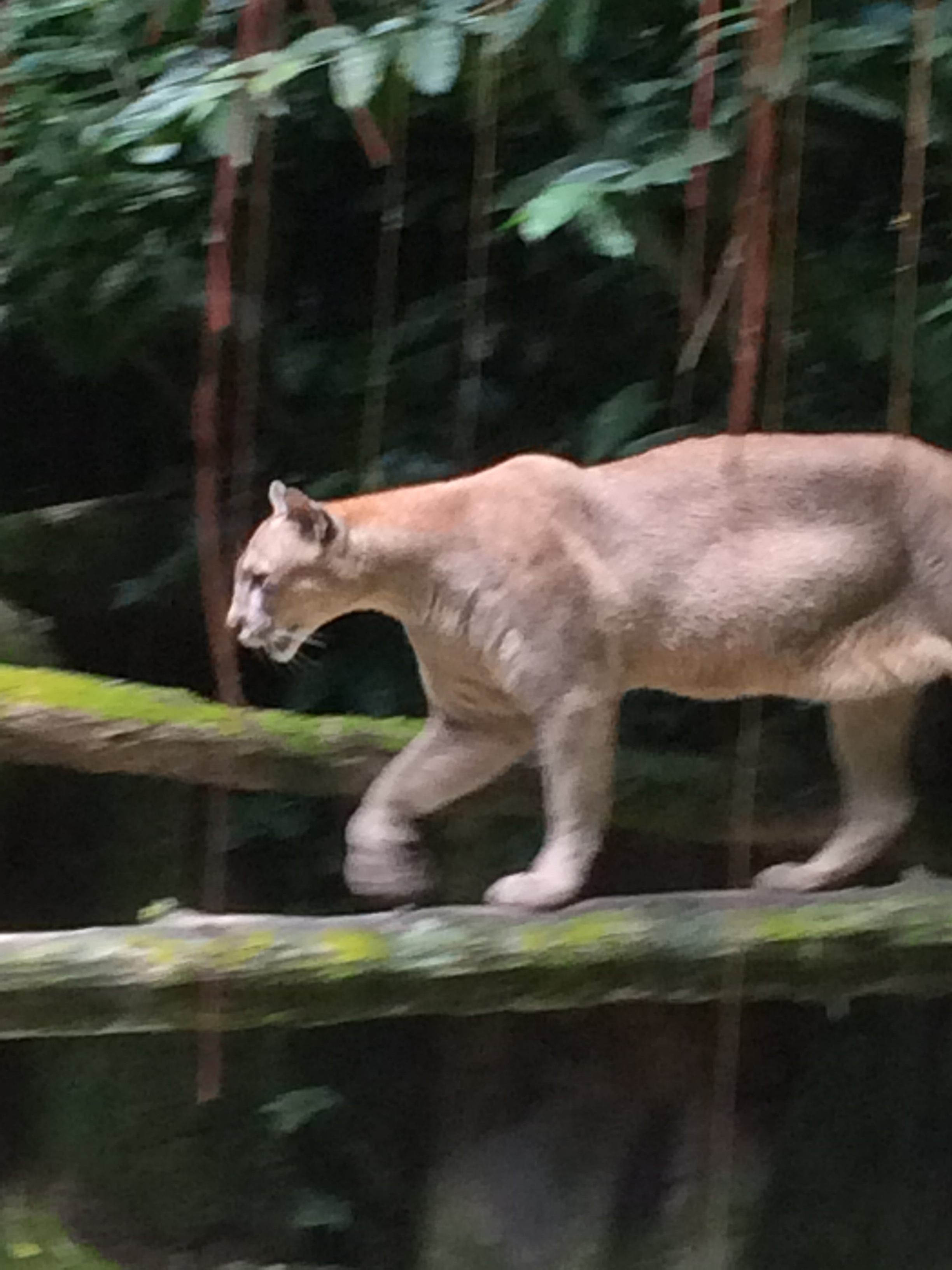New Zealand has “Nine Great Walks”. For the full walk experience you must spend several days on the trail staying at huts along the way. Frank and I decided early on that we would forgo the multi-day tramping but would go to several of the great walk sites for day treks. Our first walk site is the Tongariro National Park. The park is famous as a filming location from Lord of the Rings and is home to “Mt. Doom”. As geeky as we are for Game of Thrones, we are not LOR fans so no need to follow the footsteps of Frodo and Sam.
The hike to the falls (also the way of Frodo and Sam)
The weather turned from bad to worse and by the time we got to the park we downed our full rain gear and settled on a 7-mile trek, to a waterfall and back. This might be our 20th waterfall and after Iguazu Falls in Argentina and Brazil they all look small. But the walk was good and the landscape was different than we have seen, all colors of browns and red. We had a good time, got soaking wet but all in all a nice outing.
Wellington
Our guide and group
Janet and I arrive at Wellington at night. The wet curvy roads and the oncoming headlight reflections make the drive into town tedious. We find the high rise serviced appointment just before reception closed; thank god as the directions to the parking structure and mini ramp would have been indecipherable. We squeezed our little compact around the circle ramp with out a scrape or grind. The apartment was angular and weird, but well equipped and had an open balcony. The next day we went on a walking tour of the city. The guide was a longtime resident and a professorial type. Our lone companion traveler on the walk was from California—he had gone NZ—wearing light sandals only on this cold wet day.
Pano of the harbor
Wellington is the capital of NZ, but at 200,000 people much less populated then Auckland. It suffered a 7.8 mag earthquake on 11/14/16 and many buildings have been vacated until funds can be allocated for interior structural repair; the exteriors seem in one piece to the naked eye with the exception of the fences surrounding them and the massive amount of building going on. This city is the center of government; the city has many ministry buildings, the most remarkablebeing the Parliament Building, called the “The Beehive”, and the Supreme Court, with its glass exterior and decorative metal sculpture on 4 sides and the circular court chamber where the walls are covered with angular copper; very cutting edge. There aregovernment buildings saved and on display from the 1800’s—usually all wood construction made to look like stone.
The original written treaty
We enjoyed some historic context. Our tour took a quick trip into the Wellington Library where we were treated to viewing the actual written treaty between the British crown and the Maori tribes, numbering about 400 separate tribes. It has deteriorated to large extent on the signatory section, but the terms are in place. Then we went to one of the first Anglican churches made of wood with the roof supported by an interior truss system like a sailing ship. There, hanging from the ceiling were 2 flags: the Stars and Stripes, and the red US Marine Flag from the 1940’s. The Kiwis had great respect for our US marines as many were stationed in NZ before being sent to war in the pacific to fight Japanese, who also threatened NZ. The story goes that certain marines wanted to go to church before shipping out. Accompanied by officers to ensure order, the marines arrived at Saint Paul's and were greeted with such affinity and warmth that in the next weeks hundreds of marines visited the church and were treated to home cooked meals and fellowship so far away from family.
The flags in the church
The mechanical clock, a gift from England
We enjoyed watching the old Wellington mechanical clock, still working, open like an onion and turn its painted mural story boards of historic events; very unique and cool.
The city has welcomed a thriving art community. The waterfront is decorated with contemporary sculptures influenced by the Maori culture. Throughout the city other modern sculptures adorn the streets and parks; the theme usually relates to historic figures or events, but some social commentaries. See some photos of the art.
Later in the afternoon we visited the Wellington historic museum.
First, we walked across the street to a really cool indoor park with pop-up food stalls for lunch, then we went to the museum. It was very similar to the museum in Auckland but bigger and free!!
Later we returned to the indoor park where the cinema was upstairs so we decided to rest and saw the movie “ Dunkirk” for $10. Love Tom Hardy as RAF pilot.
Our ferry boat
Janet on the boat, trying to keep distracted from the ride
Ferry ride. We left Wellington and the North Island on the large Blue Ridge Ferry. Park the car and take an interior seat for about 3 hours as we cross Cook’s Crossing” to the South Island port of Picton. The captain announced “only minor swells” on the route. But, we thought it was rocking way passed our tummy comfort zone—a couple Dramamine too late—we just closed our eyes for awhile—another mistake—then watched a Netflix movie we had downloaded. All ended well; No bad outcome and we landed in one piece.
View of Picton as we land on the South Island






















